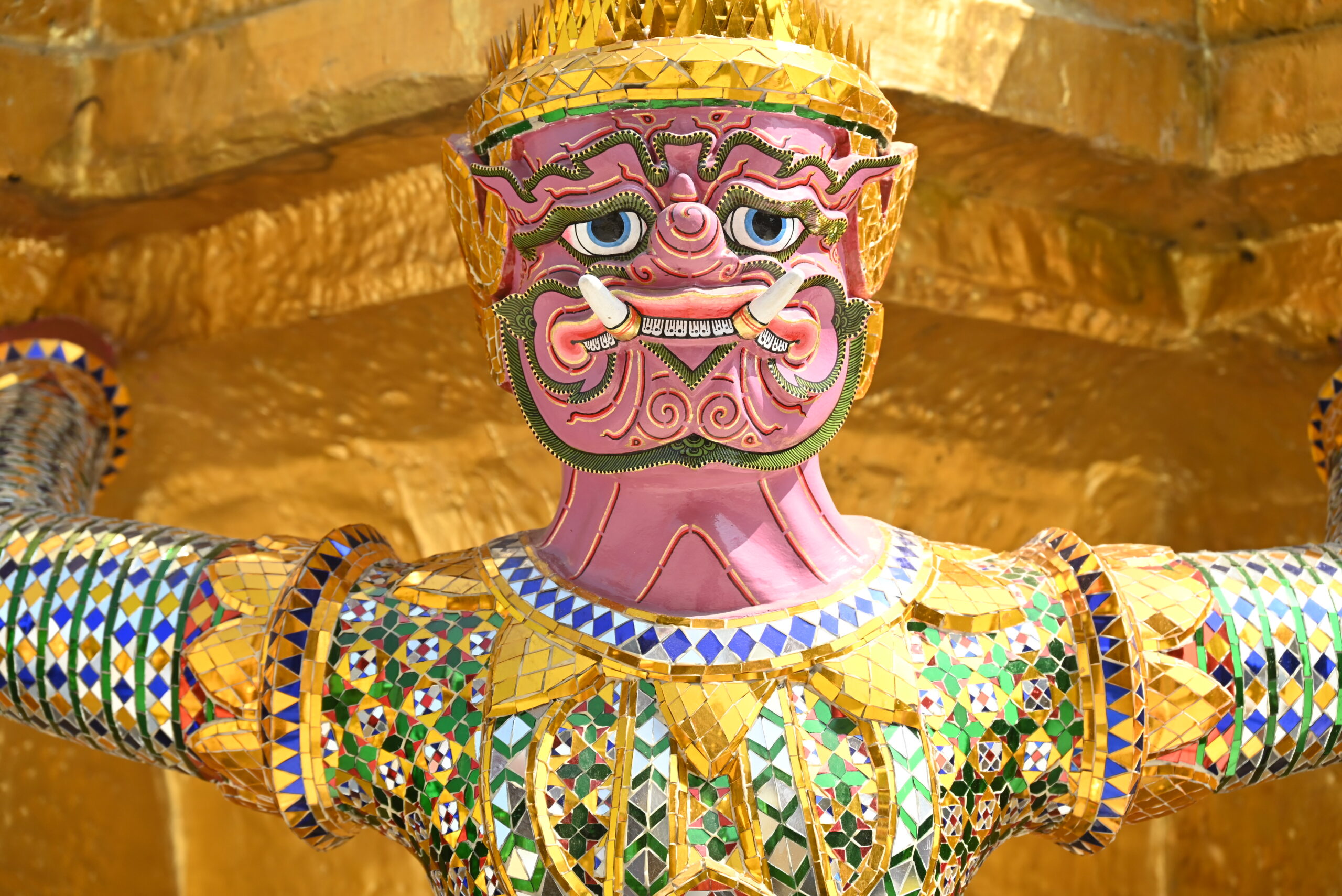The Hairy giraffe… IN JAPAN
After spending a month in China, our world tour heads to Japan. For Benjamin, this is a return to the Land of the Rising Sun fifteen years after his first visit. It’s an opportunity for him to revisit certain sites he particularly enjoyed. He will also have the chance to note the changes that have occurred in the country over the years, especially in terms of tourism and hospitality. For François, Japan is a destination he has dreamed of for a long time. A big fan of video games, he will (finally!) have the opportunity to dive headfirst into this universe. For him, it will be a true pilgrimage (dragging Benjamin along) leading him from Nintendo Store to Nintendo Store and from Pokémon Center to Pokémon Center.
Japan also brings us back to encountering Western tourists, who were almost completely absent in China. This isn’t necessarily an advantage. After all, we were getting used to our Hollywood star lifestyle, where people asked to take photos with us whenever we went outside.
How long? We stayed in Japan for 3 weeks.
When? Mid-April and early May. We planned our itinerary to avoid the Golden Week, the Japanese holiday period. We aimed to avoid the crowds at major sites and at Universal Studios in particular. Fortunately, our time in Hiroshima allowed us to witness the last days of the cherry blossoms in bloom.
Ease of independent travel: 4 giraffes ![]() The country has a very extensive railway network. Trains are frequent, and there are many connections. However, it can sometimes be difficult to navigate properly. Many cities have multiple train stations, making it easy to end up at the wrong one. Additionally, signage inside trains (and subways) is often absent. You need to be vigilant not to miss your stop. Moreover, several different transportation companies operate the transport networks. If you are traveling with a Japan Rail Pass, only JR trains are accessible. You cannot board trains from other companies without purchasing a ticket. The same situation applies to the subway. For example, in Osaka, if your subway route involves lines operated by different companies, you will have to pay twice, once per company. Transfers can thus end up being quite costly.
The country has a very extensive railway network. Trains are frequent, and there are many connections. However, it can sometimes be difficult to navigate properly. Many cities have multiple train stations, making it easy to end up at the wrong one. Additionally, signage inside trains (and subways) is often absent. You need to be vigilant not to miss your stop. Moreover, several different transportation companies operate the transport networks. If you are traveling with a Japan Rail Pass, only JR trains are accessible. You cannot board trains from other companies without purchasing a ticket. The same situation applies to the subway. For example, in Osaka, if your subway route involves lines operated by different companies, you will have to pay twice, once per company. Transfers can thus end up being quite costly.
In Japan, foreigners can purchase the Japan Rail Pass before their arrival in Japan. It’s a pass that provides access to all JR company trains, subways, and buses at no additional cost. You can buy a pass for 7, 14, or 21 days in standard or Green (first) class. It seems convenient at first glance. However, a significant increase in the price of the pass warrants consideration when planning your trip. We had considered purchasing a 14-day pass. The unit cost of 55,000 yen (approximately 330 euros) in standard class put us off. To make it cost-effective, we would have had to traverse the country from end to end and take the train daily, which didn’t align with our itinerary. So, we opted for individual tickets for each leg of the journey.
A payment card can be purchased to pay for access to buses, subways, and most trains. It can also be used for purchases, similar to what’s available in Taiwan, Hong Kong, and Korea.
Costs: 4 giraffes ![]() Japan is obviously a relatively expensive country (transportation, accommodation, etc.). Almost all visits (especially temples) require an entrance fee, and even if the ticket price is low, the bill adds up quickly. However, it’s possible to eat well for a reasonable price. Don’t expect gargantuan portions though. Similarly, hotel rooms are often very small, and you’ll have to make do with a small double bed.
Japan is obviously a relatively expensive country (transportation, accommodation, etc.). Almost all visits (especially temples) require an entrance fee, and even if the ticket price is low, the bill adds up quickly. However, it’s possible to eat well for a reasonable price. Don’t expect gargantuan portions though. Similarly, hotel rooms are often very small, and you’ll have to make do with a small double bed.
Ease of communication: 4 giraffes ![]() The massive influx of foreign tourists in recent years has forced the Japanese to improve their English skills. You won’t have any trouble communicating basic English at tourist sites. Most restaurants will offer translated menus. “Lost in translation” is now just a distant memory.
The massive influx of foreign tourists in recent years has forced the Japanese to improve their English skills. You won’t have any trouble communicating basic English at tourist sites. Most restaurants will offer translated menus. “Lost in translation” is now just a distant memory.
Safety: 4 giraffes ![]() No safety issues or feelings of insecurity during our time in Japan. Pedestrians, however, should still be cautious as the Japanese drive on the left. Remember to look in the right direction before crossing. Also, be careful of bicycles: they ride on sidewalks (even though a bicycle lane is often reserved for them on the roadside), they don’t announce themselves, and they always assume priority.
No safety issues or feelings of insecurity during our time in Japan. Pedestrians, however, should still be cautious as the Japanese drive on the left. Remember to look in the right direction before crossing. Also, be careful of bicycles: they ride on sidewalks (even though a bicycle lane is often reserved for them on the roadside), they don’t announce themselves, and they always assume priority.
Japan is also a seismic zone. Earthquakes are frequent there. It’s not uncommon to have at least six earthquakes per day on land or at sea. Fortunately, they are not all powerful. However, a massive, highly destructive earthquake occurs approximately every 100 years (the Big One). The last one was in 1924…
Health: 5 giraffes ![]() No particular concerns on that front and no need to worry: the Japanese healthcare system is excellent.
No particular concerns on that front and no need to worry: the Japanese healthcare system is excellent.
Gay friendly: 3 giraffes ![]() LGBT populations have several rights in Japan. However, they still cannot legally unite in marriage. Surrogacy (GPA) and assisted reproductive technology (PMA) are also prohibited.
LGBT populations have several rights in Japan. However, they still cannot legally unite in marriage. Surrogacy (GPA) and assisted reproductive technology (PMA) are also prohibited.
Travel ease: 5 giraffes ![]() No particular concerns for visiting Japan.
No particular concerns for visiting Japan.
Highlights: ![]() Miyajima, Universal Studios (especially the Super Nintendo World area), Nara and its Kasuga-taisha temple, the Zen gardens of Kyoto, and the big Buddha of Kamakura are all great places to visit.
Miyajima, Universal Studios (especially the Super Nintendo World area), Nara and its Kasuga-taisha temple, the Zen gardens of Kyoto, and the big Buddha of Kamakura are all great places to visit.
Letdowns: ![]() There are crowds everywhere, and the number of Westerners is impressive and sometimes results in strange photos where there are no Japanese people. It loses authenticity. The retouched images from influencers and Instagrammers give false representations of Japan. No, in Japan, cherry trees are not pink. The majority of varieties found there produce white flowers. No, Japan is not a modern country at the moment, especially in terms of transportation. Japanese food, although very good, can be repetitive (nothing looks more like a bowl of udon than another bowl of udon) and lacks vegetables and fruits.
There are crowds everywhere, and the number of Westerners is impressive and sometimes results in strange photos where there are no Japanese people. It loses authenticity. The retouched images from influencers and Instagrammers give false representations of Japan. No, in Japan, cherry trees are not pink. The majority of varieties found there produce white flowers. No, Japan is not a modern country at the moment, especially in terms of transportation. Japanese food, although very good, can be repetitive (nothing looks more like a bowl of udon than another bowl of udon) and lacks vegetables and fruits.
Check out our Travel Reflections articles on Japan:
3-WEEK ITINERARY IN JAPAN
Here is the detailed itinerary of our three weeks in Japan:
Day 0: Early morning flight of just over 2.5 hours from Beijing on which François responded to an urgent message from the cabin chief. The team was looking for a healthcare professional to take care of a passenger… with a persistent nosebleed! It wasn’t a major emergency, but François still had to decide if an emergency landing was necessary. In addition to becoming the hero of the cabin chief who thanked him at least ten times, François was presented with a gift from Japan Airlines!

After these events, we waited for 5 hours at Tokyo airport for our connection to Hiroshima. We arrived at our hotel late in the evening. Up since 5 in the morning, it was a very long day.
Day 1: We head to the Peace Park located just a few steps from our hotel. The morning doesn’t seem very cheerful, as we will go back in time to August 6, 1945, the day the first American atomic bomb destroyed everything within a radius of 3 km. We will see the Genbaku Dome, one of the few remnants of this massive destruction, as well as the hypocenter above which, 600 meters away, the bomb exploded.



We then head towards the Children’s Peace Monument in memory of the children who died as a result of the explosion and the Flame of Peace before ending up at the memorial museum.
While the stroll in the park is pleasant with the Motoyasu River flowing nearby and the cherry blossoms in bloom, the visit to the museum is poignant and touching.


Filled with testimonies from victims or their relatives and remnants, the first part makes one realize the enormity and barbarism of the catastrophe.



The second part, more narrative, traces the etiology of the bomb up to its deployment and the consequences. The confidential document listing the different cities that could be “interesting” to atomize and the reasons why Hiroshima was chosen is striking.

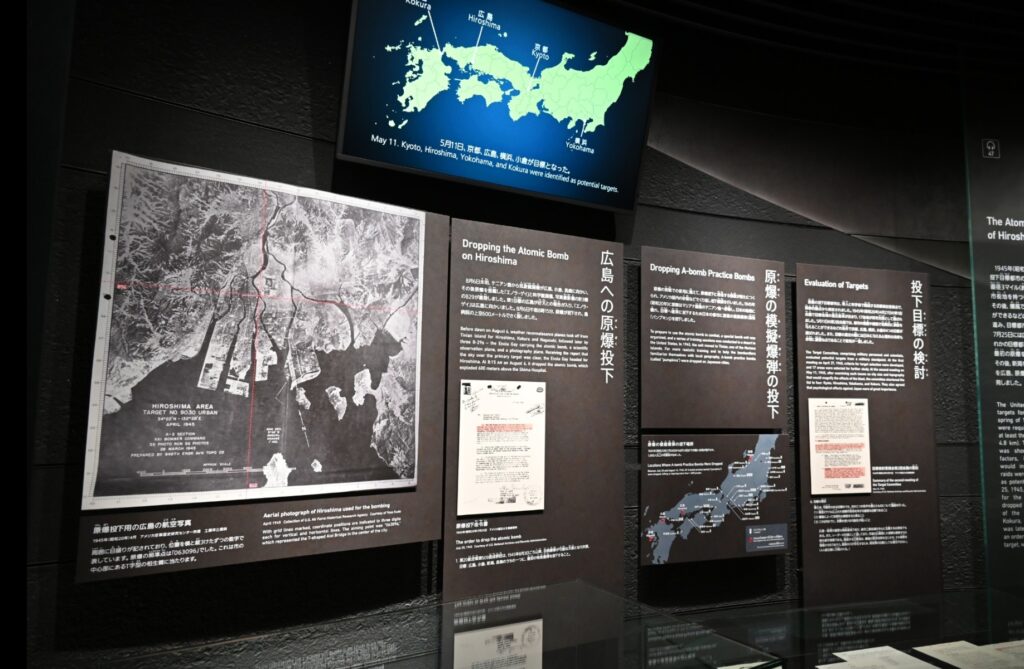
The last part focuses on the city of Hiroshima, from its prosperity to its destruction.
After spending 2 hours reading about the atomic bomb, we needed to change our minds. What better way to do that than a Pokémon Center! Our first in Japan, but certainly not the last. Unlike the one in Taipei, the visit is much smoother and conducive to shopping.

We return to Peace Boulevard and stroll in and around the pedestrian zone located to the north.


We do some manga shopping (our first) along the way before settling down under the cherry trees on the banks of the Motoyasu River.


Day 2: We take the boat directly from Peace Park to Miyajima. We spend 6 hours there visiting Itsukushima Shrine and the temples Daiganji and Daishoin, admiring the O-Torii gate and Nishinomatsubara Bay, climbing the 5-story pagoda, strolling through the tourist streets, and eating an excellent katsudon.



Arriving with the first boat, we were lucky to be able to enjoy the town and the shrine before the mass of tourists arrived. While the shrine is beautiful and offers, once again, architecture completely different from what we have seen since the beginning of the trip, the visit is linear and done very quickly. There’s nothing to see, and it’s impossible to approach the small shrines it contains.
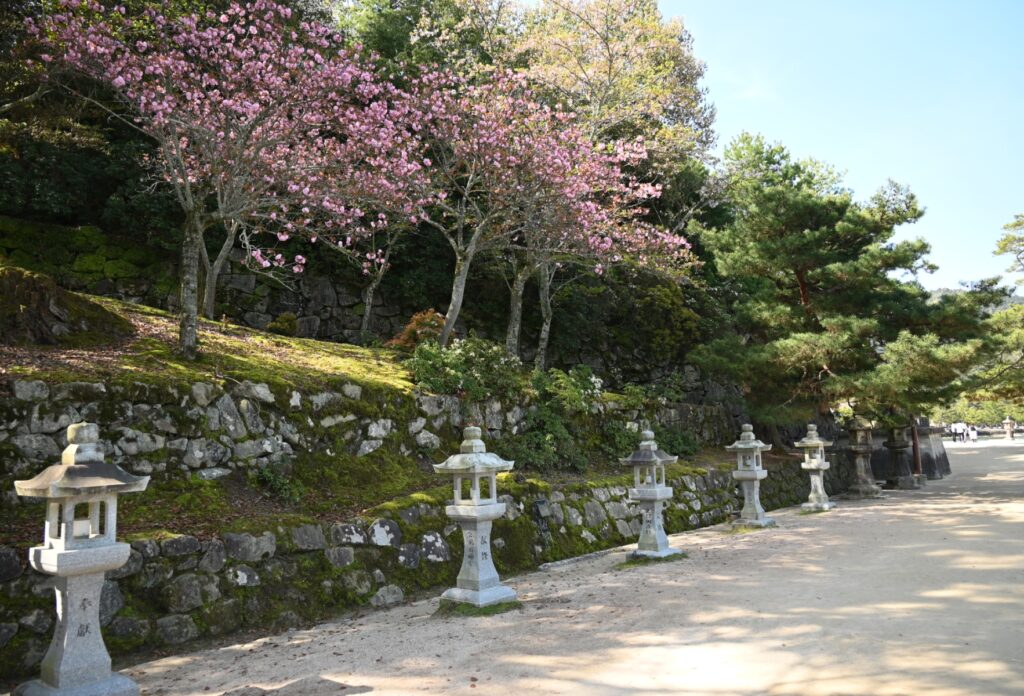


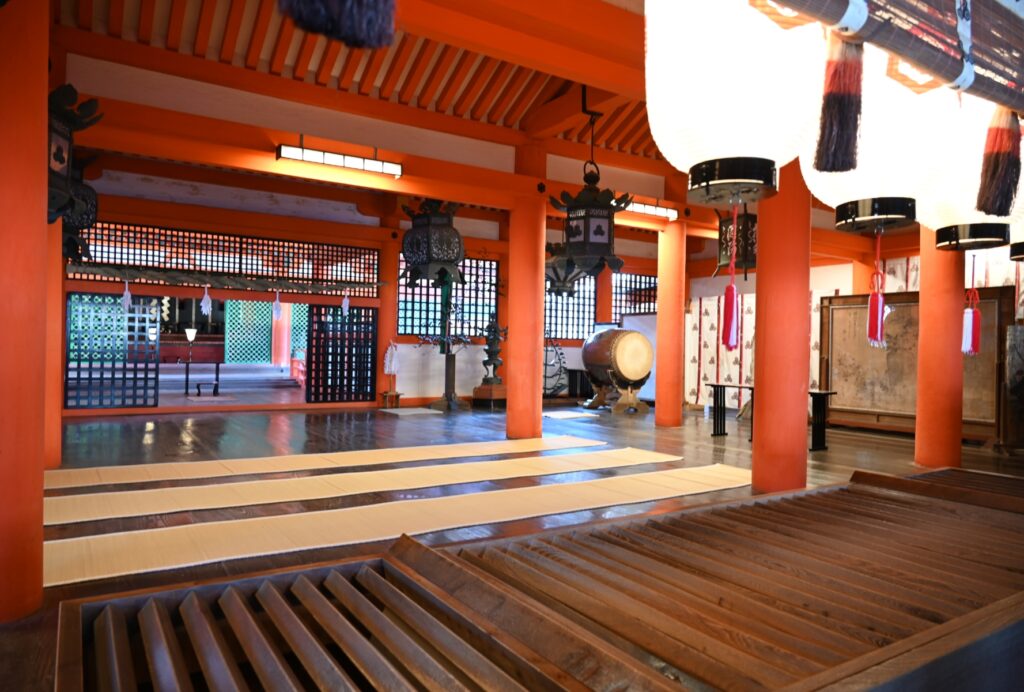


The small temple Daiganji located just behind is cute. However, it’s frustrating not to be allowed to photograph the inside of the shrines.


What we preferred without a doubt is the Daishoin temple located up in the mountains amidst the vegetation. Much more impressive than the others, this place of worship offers different spaces for contemplation.


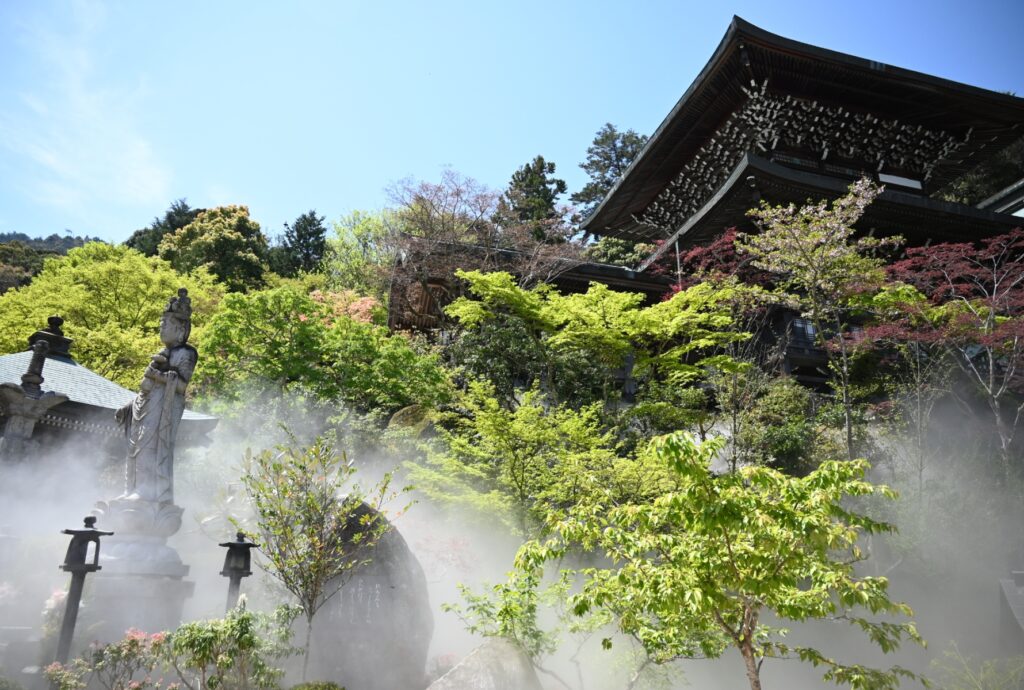
Special mention to the 500 statues of rakan (Buddha’s disciples) that welcome the visitor upon arrival at the bottom of the mountain, near the Niomon gate.




We return to Hiroshima in the mid-afternoon to enjoy the cherry blossoms in full bloom.
Day 3: We take the train in the late morning. A train mistake causes us to arrive in Osaka later than planned.


We will arrive there in the early afternoon. A few days ago, while we were still in China, we realized that our first night in Osaka had not been booked. Due to the last-minute nature of our search, the prices were higher than what we had originally booked. So, we turned to a love hotel. Popular in Japan, these hotels, off-limits to minors, can be booked by the hour or for the night for sexual encounters. While the dark corridors with walls covered in old wallpaper may resemble brothels from the early 20th century, the room is surprisingly comfortable and cozy. However, the self-explanatory accessories serve as a reminder of the type of hotel we are in.



After dropping off our bags, we head to Osaka Castle Park. Due to the late hour, it’s too late to enter the castle itself (later we’ll learn from comments online that the interior is not particularly interesting). Built in the 16th century, the castle has been destroyed and rebuilt many times, with its current appearance being relatively recent (about a hundred years old). So, we save our yen and enjoy the lovely view of the castle.


Next, we head to the second Pokémon Center of our trip in Japan: the one at the Daimaru shopping mall.


We end the day on Dotonbori Street, where life is in full swing. The neon signs abound, and the streets are crowded with tourists (mostly Westerners). We soak in the atmosphere, take some photos, and then head back to our hotel. We’ll return to Dotonbori later in our stay in Osaka.





Day 4: Taking the train to Himeji to visit the castle, we’re greeted by the stunning white castle perched atop its stone ramparts. Built in 1601 and never besieged, bombed, or burned, most of the buildings are remarkably well-preserved. Known as the White Heron Castle for its pristine white color, it’s a sight to behold. Opting for the full tour, which includes the main keep and the west bailey, the primary residence of Princess Sen, the castle’s main inhabitant, we’re treated to beautiful gardens filled with blooming cherry blossoms.


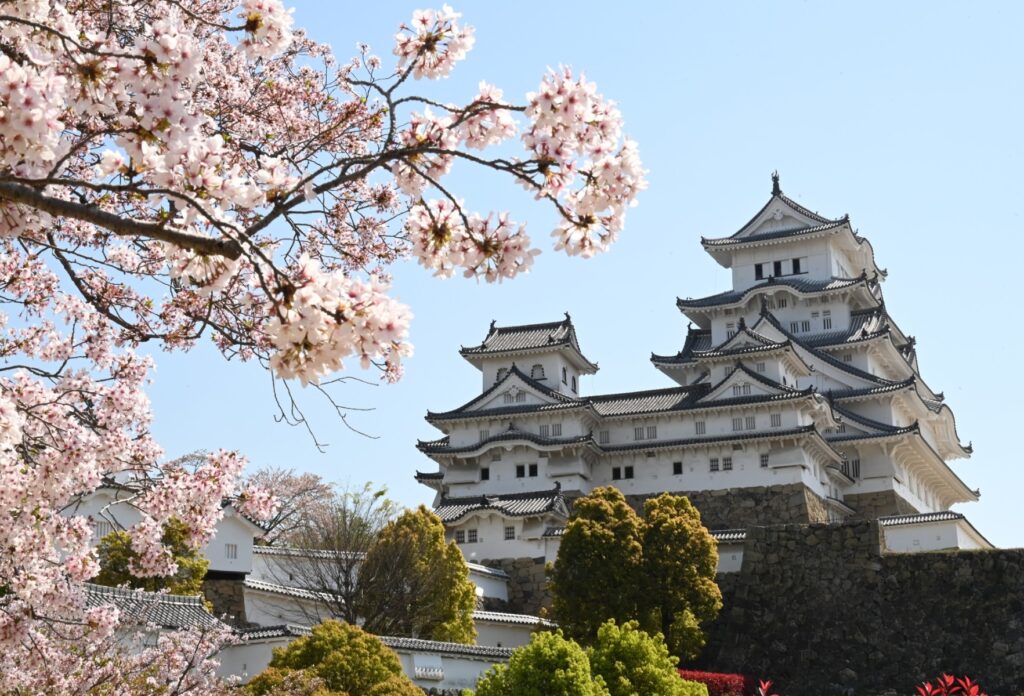
The interiors are a bit more disappointing. While the structure is indeed well-preserved, the rooms are completely empty, lacking any furnishings. Some explanatory panels scattered around provide insight into the castle and its history, but there’s no effort to recreate the living conditions or ambiance. Climbing the six flights of stairs to the seventh and final floor, the city view is decent but not exceptional. The large number of tourists also detracts from the experience. We spent just over 1.5 hours on-site.
The next stop is a visit to Koko-en Garden, located 300 meters from the castle and accessible with a combined ticket for the castle and garden. The garden consists of nine different sections, each showcasing gardening techniques from the Edo period (1600-1860). It’s truly beautiful and encompasses all the elements of a Japanese garden: water features, bridges, rocks, stone lanterns, and koi (carps) ponds.




After enjoying some excellent udon noodles and considering that the day is not yet advanced, we decide to make a stop in Kobe, which is on the way back to Osaka.
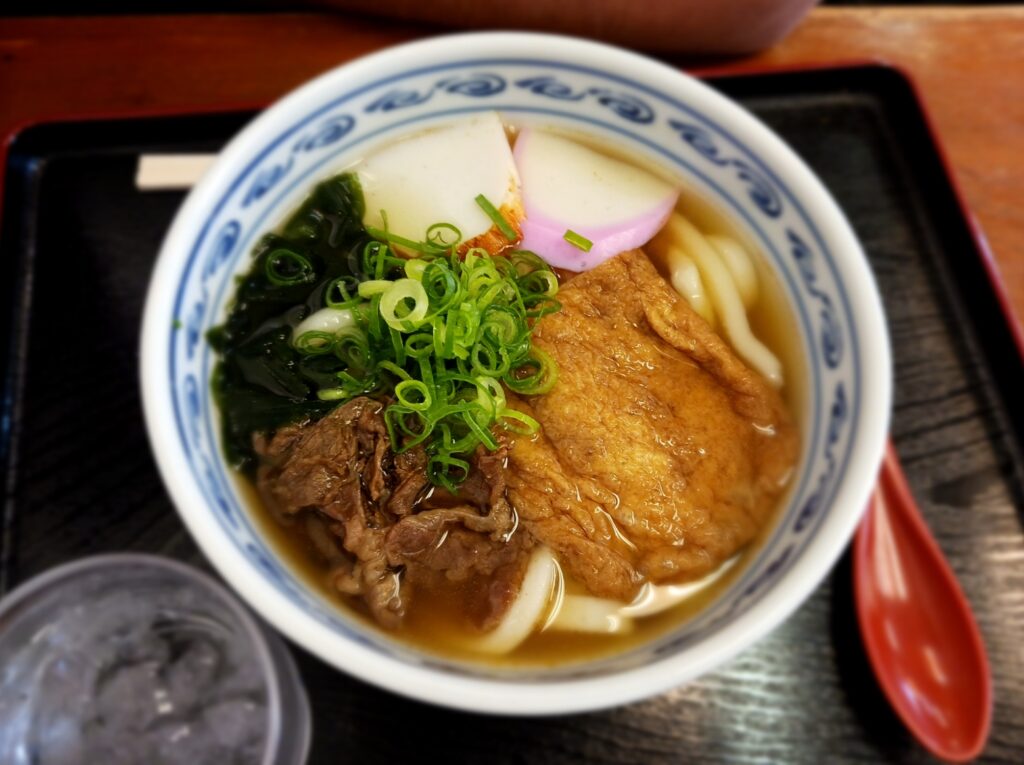

Disembarking at Sannomiya Station, we are only about fifteen minutes away from the Kitano district known for its Western-style houses. The neighborhood is cute but a bit too trendy for our taste.




A charming little temple, however, saves the day.


We head down towards the streets bordering the station and are fortunate to stumble, by chance, upon a procession featuring dancers, lions, and samurais that we follow to a nearby temple.




We return to Osaka, to our new hotel, after stopping by the station to retrieve our luggage left there in the morning.
Day 5: A little tired from the journey, we spend the morning at the hotel resting. We’ve been quite on the go since arriving in Japan. Benjamin also takes the opportunity to update the budget. Around noon, we head to Umeda Station with the idea of going to the Pokémon Center located there.



Upon arrival, François has a wonderful surprise: there’s a Nintendo Store in Osaka! (He later learns that there are three in Japan). What joy!



Well, since his last visit to the one in New York was many years ago, he has no choice but to sacrifice himself and do some shopping there.
That won’t stop him from stopping by the Pokémon Centre located right next door afterwards.


We then head to the Yasaka Shrine in the Namba district. François is in “Pretty Woman” mode and definitely stands out. This shrine may be small, but it has a huge lion’s head at the entrance, which is the only real point of interest.

We then walk towards Dotonbori Street, which is less lively during the day. We make a slight detour to Hozen-ji Shrine, a small haven of serenity amidst the hustle and bustle of Dotonbori. Tiny yet famous, it’s known for its moss-covered deity statue.


We continue our journey towards the American Village. There are plenty of clothing stores from the 90s blasting rap and R&B music. There’s even a Statue of Liberty perched atop one of the buildings.



Day 6: First day at Universal Studios. We leave early to arrive an hour before opening. We’ve already bought our tickets online through a resale website (we couldn’t pay on the official website with our American or European credit cards).
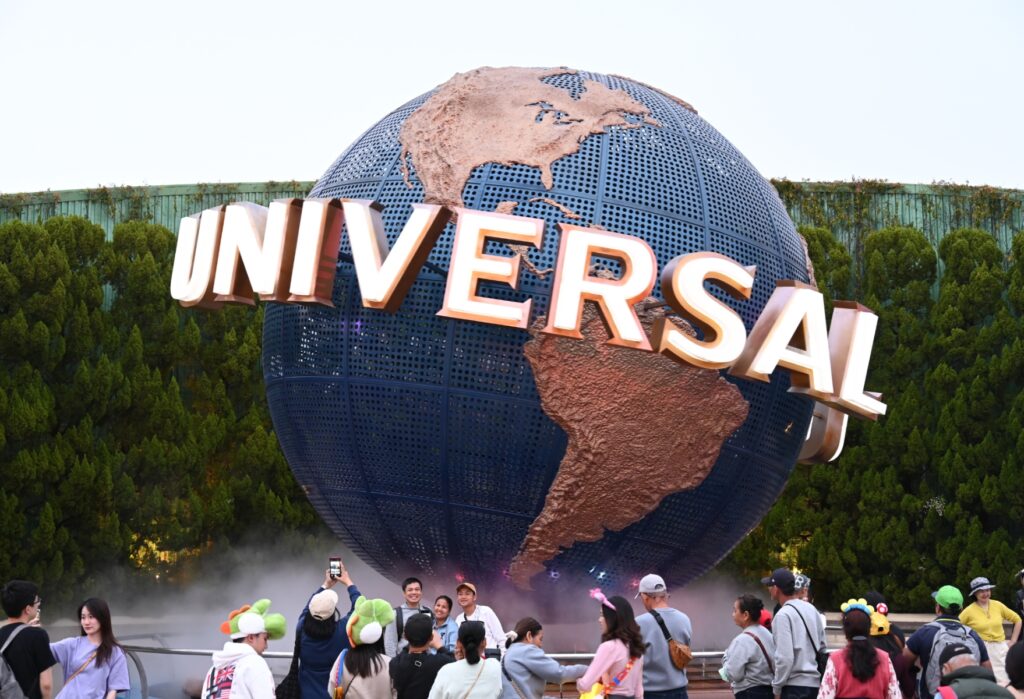
We’ve read that the park gates often open earlier than scheduled. We want to make sure we can enter the Super Nintendo World area, the main reason for our visit to the park. Access to the area is through an additional electronic ticket that can only be reserved once inside the park (unless you pay a much higher entrance fee). During peak times, it’s not guaranteed to obtain this precious ticket. Anyway, we manage to enter and get our tickets for Mario an hour later. This gives us time to stroll around the park. Our steps lead us to the Minions area where we ride the Minion Mayhem attraction. It’s fun, a simulated roller coaster experience.


We then head towards the Super Mario World area. There’s only one word to describe this part of the park: awesome! The designers have managed to recreate the video game in real size. The effect is striking. The world is bursting with colors and moving decorations that recall the universe of the famous plumber. The music and sound effects (especially when hitting those famous blocks ?) are also present.
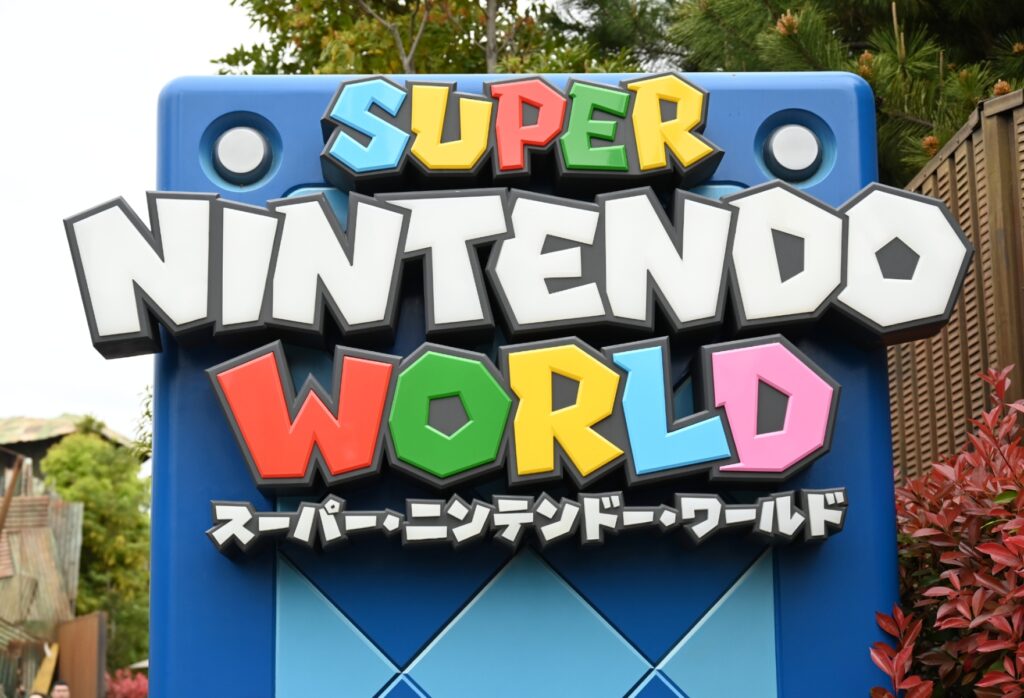



The immersion is guaranteed even for non-fans (Benjamin is proof of that).

To fully enjoy the experience, however, you need to get a special bracelet sold on-site. Without it, only the two rides are accessible (along with a stroll around the area, of course). With bracelets on our wrists (François goes for Team Luigi and Benjamin for Team Toad), we have fun hitting all the (numerous) blocks we find and playing the mini-games offered in the area.



We also take photos of the Mario universe characters present, spend time in the shops, and do the two attractions available.




If Yoshi’s Adventure is essentially a small train ride that allows for a stroll in a lovely, still immersive setting…


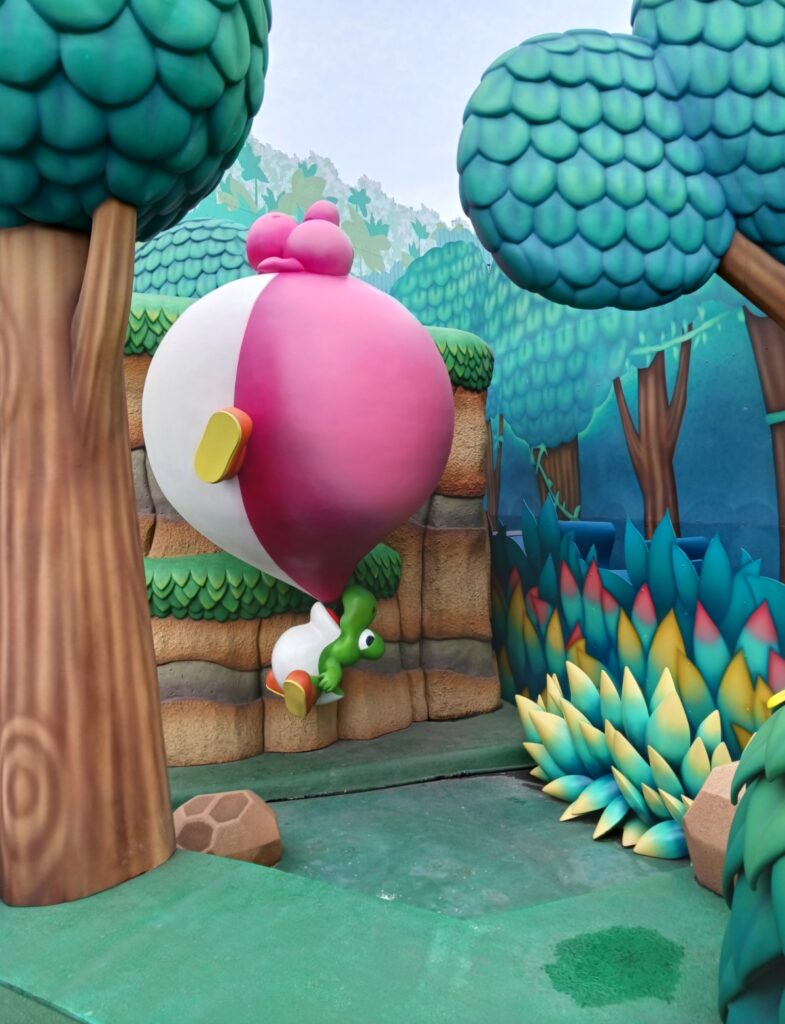
…Mario Kart is a real augmented reality experience where you have fun shooting shells at almost anything that moves.

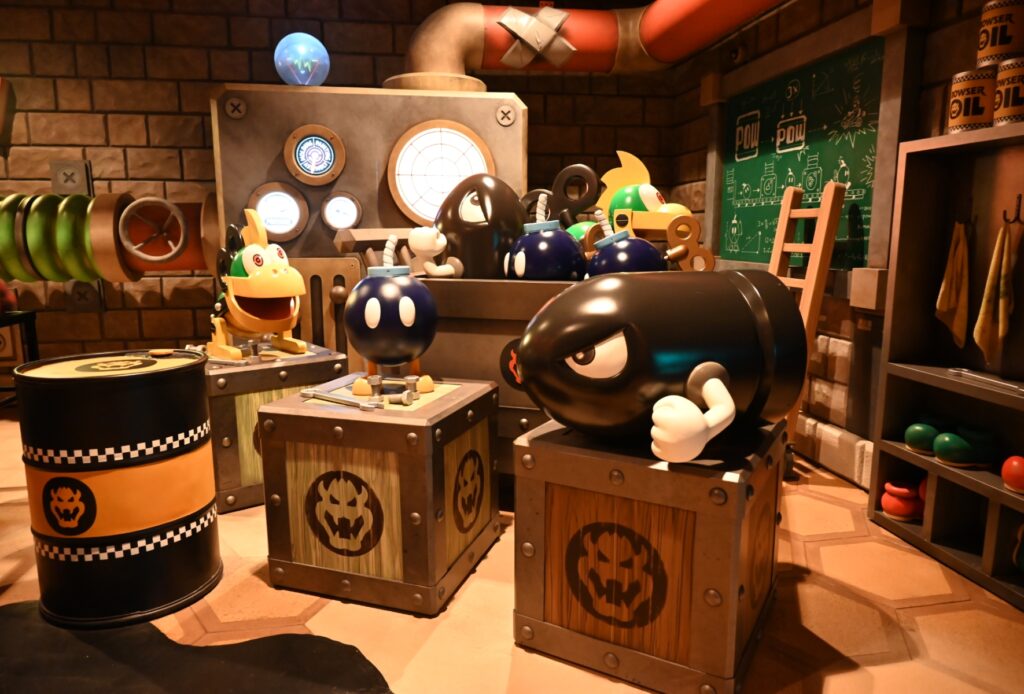
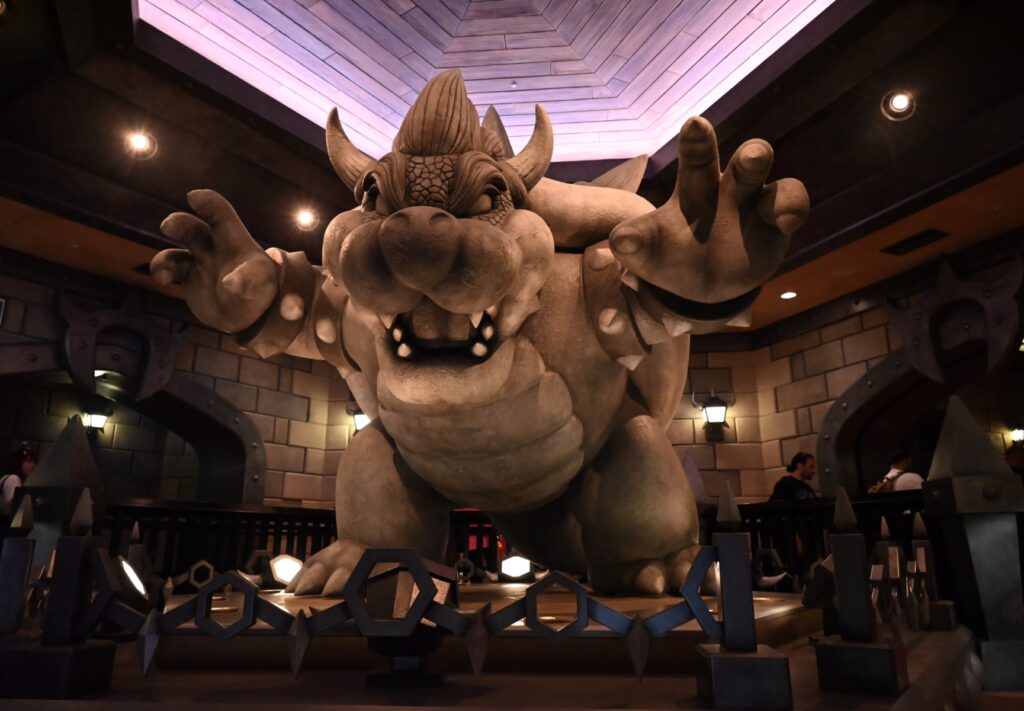


We also have lunch at Café Toad. The prices are higher than elsewhere on the site, but we couldn’t resist the beautiful and tasty dishes. It’s worth noting that once inside, we couldn’t leave without needing a new ticket to re-enter.



Luckily, the crowds weren’t too bad. The waiting times were relatively reasonable (up to 45 minutes for both attractions and the restaurant). In total, we spent about 7 hours in the Mario zone. François is a big fan, and Benjamin quickly got into the spirit of things.
François then takes advantage of the short wait time to ride Jaws. The attraction is aging, but the shark isn’t too bad. Next up is The Flying Dinosaur, a roller coaster in a lying-down position. Benjamin, on the ground, is probably more scared than François, who is on the ride. It’s thrilling, it’s exhilarating, but it’s really awesome!
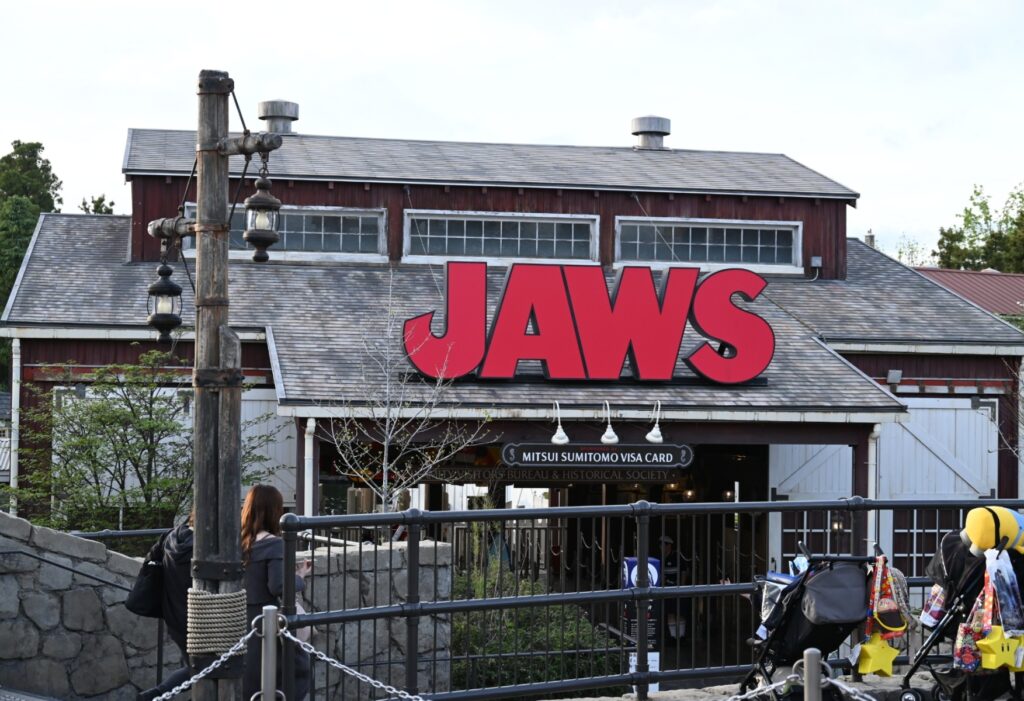



We end the day with the Universal Monsters show. The concept is simple: take Universal monsters (Dracula, Frankenstein, Beetlejuice, etc.) and have them sing popular American songs in a graveyard setting.


It’s a fitting end to a day, even though we find it strange to see this invasion of American culture in a country like Japan. Watching young Western women in miniskirts and raincoats singing “It’s Raining Men” in a society with very rigid social codes is frankly bizarre.
Day 7: Second day at Universal Studios. We arrive as early as the day before to quickly access the two attractions in the Super Nintendo World area. Our plan is to do these attractions, do some shopping, and spend the rest of the day enjoying the park.

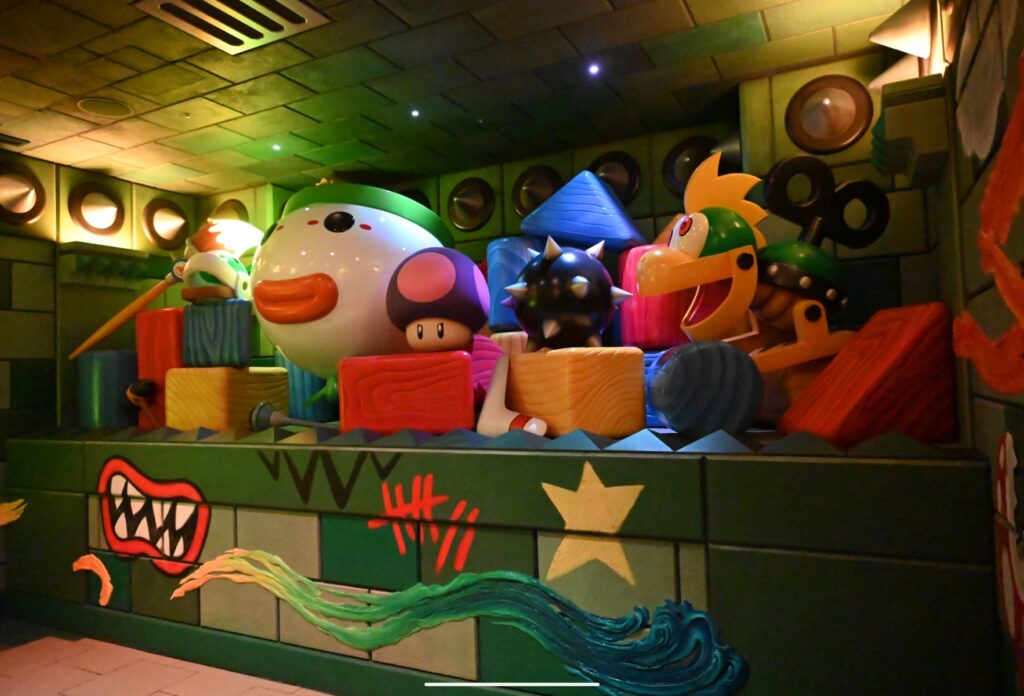

We spend about two hours in the Nintendo area (and both beat our score from yesterday at Mario Kart).



Before leaving the area, while François is in the shops, Benjamin takes the opportunity to discreetly hit a few blocks and collect coins and stamps to finish first… The sneaky cheater!


We won’t do any other attractions for the day. There are a bit more people than yesterday, and the wait times are slightly higher. The rest of the day will be spent strolling around the other areas of the park. Our itinerary is influenced by the shows and character meetings offered by the park. We proudly pose with the Minions…





…Snoopy and Sesame Street.



We see fantastic creatures in action, butterbeer in hand, in the Harry Potter area.







We attend a dinosaur parade.


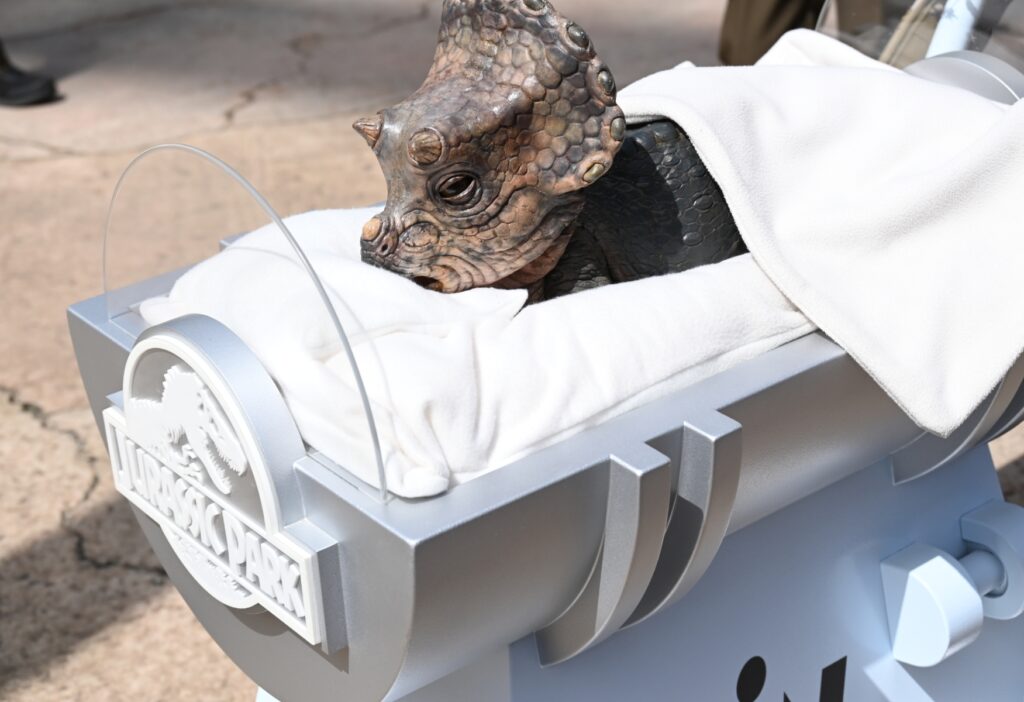



We’re in the room when the cast of the movie “Sing” takes the stage.


Our two days at the Studios were really great. After nearly 4 months in Asia, it felt good to be in an American bubble with flavors, smells, and an atmosphere that are familiar to us. Two days weren’t too much either. This way, we were able to fully enjoy Super Nintendo World and then explore what the rest of the park had to offer.




Doing everything in just one day would have been impossible, especially because of the wait times for the attractions. So, our decision was more expensive but much more comfortable.



Day 8: We leave in the late morning for Kyoto, where we arrive around noon. We drop off our bags at our hotel and head out for lunch. On the way, to continue the tradition, we stop at the Pokémon Centre in Kyoto.


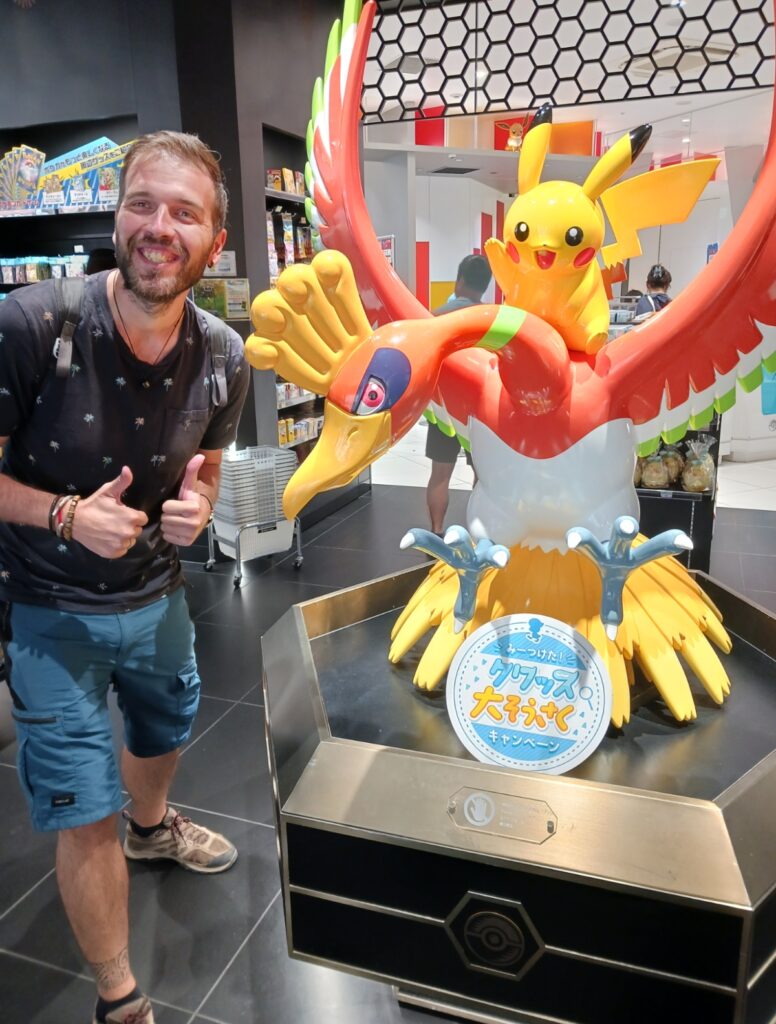
After a quick lunch, we walk to Nijo-jo Castle. Dating back to 1603, it served as a residence for the shogun (a kind of military leader) during his visits to Kyoto. It consists of two palaces (Honmaru and Ninomaru) and gardens. The first palace is closed to the public for restoration. The second one is comprised of six wooden buildings through which visitors can stroll and admire the magnificent wall paintings. Unfortunately, most are reproductions. Several explanatory panels provide insights into the architecture, paintings, and functions of the different rooms. The visit is enjoyable.


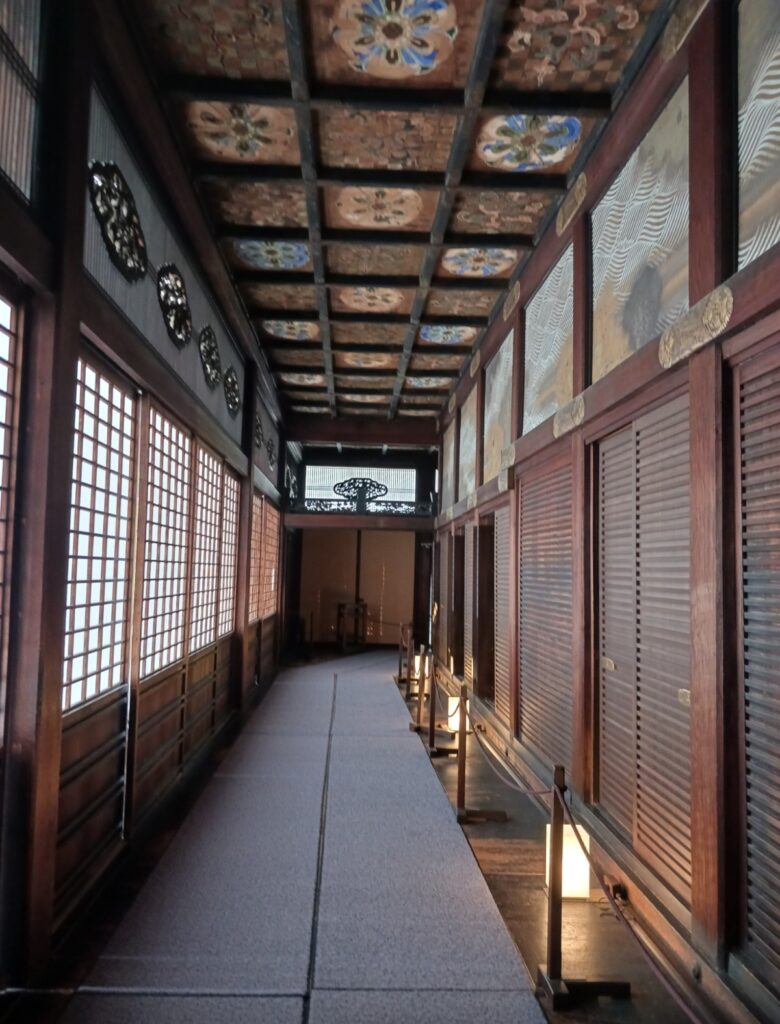


Exiting the palace, we enter the gardens. They held little interest during our visit. The park mainly features cherry trees, but their blossoms were nearly finished when we were there. The sight must be quite different when they are in full bloom. We take a quick stroll before heading back to the hotel.

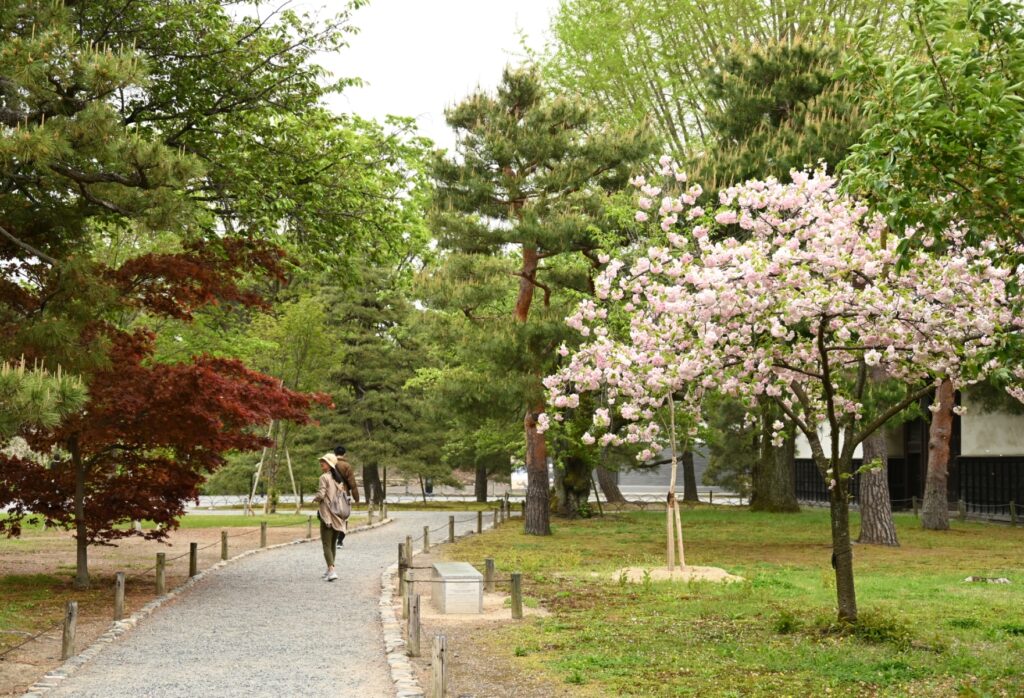

Day 9: The day is divided into three parts. The first part involves visiting the temples and shrines located to the east of the Gion district. We start with Kiyomizu-dera Temple. The stroll through this temple surrounded by greenery is truly delightful. Moreover, since we arrived early, there are still few tourists around.




We then proceed to Kodai-ji Temple, Yasaka-jinja Shrine, and Chion-in Temple.








We then stroll through the traditional Gion district. The nice weather has attracted a considerable number of tourists, who have evidently driven the geishas away from the area. While we have to weave through the tourists to progress along the main streets, we manage to find a few less crowded side streets where we can take photos.




For the last part of the day, we take a bus to the Kinkaku-ji Temple, home to the Golden Pavilion. This pavilion, entirely covered in gold (except for the ground floor), is not open to visitors and contains Buddha’s relics. Completely burned down in 1950 by a monk, it was rebuilt in 1955. Although quite far from the city center, this building is truly beautiful and worth the trip.


Day 10: We decide to visit some Zen gardens. Benjamin has fond memories of certain ones and knows where to take us. So, we head by bus to the Daitokuji Monastery. This monastery consists of several temples, each containing one or more dry (Zen) gardens. During our visit, only four temples are open. With entrance fees for each temple ranging between 400 and 800 yen (2.5 to 5 euros), we decide not to visit all of them. We mainly choose the temples where photography is allowed. Thus, we visit Zuiho-in, where we are the only tourists. It is a small temple with two main gardens. We are quickly captivated by the serenity of the place.



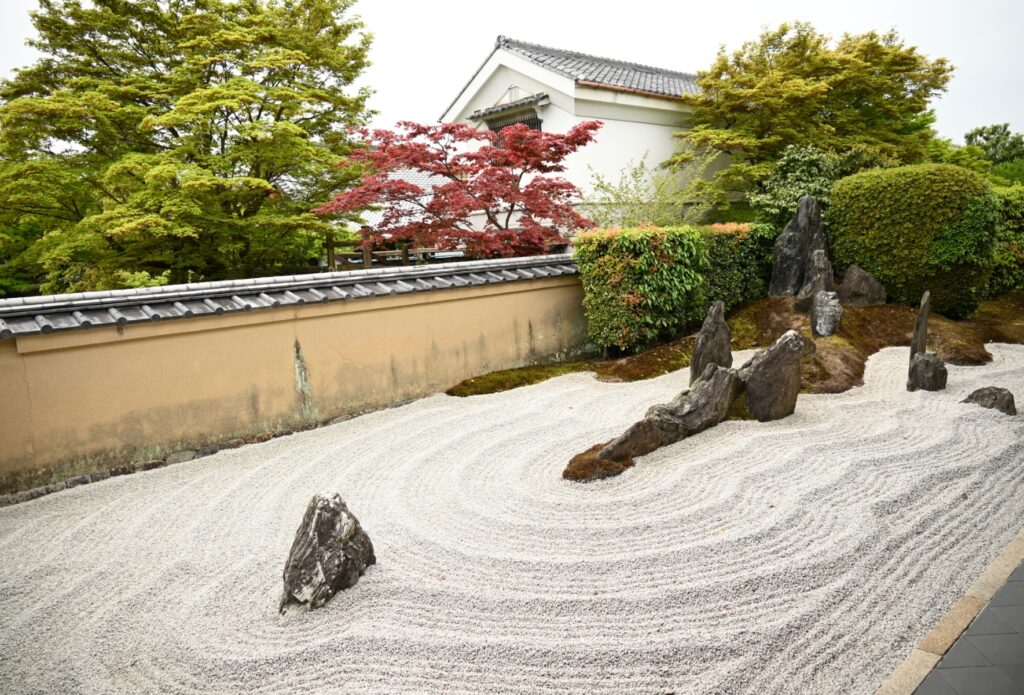
We continue with Daisen-in, where photos are not allowed. The temple feels very commercial, with shops selling Buddhist products inside, and the gardens are too cluttered for our taste. Additionally, a constant flow of tourists, particularly groups with guides who inevitably speak, prevents us from fully enjoying the place. This is the temple we liked the least.
We will end with Benjamin’s favorite temple, Ryogen-in. This temple has five beautiful dry gardens, each with its own unique atmosphere. The energy emanating from this place is truly pleasant. We take the time to recharge before heading back into the city.





We then walk towards the Kyoto Imperial Gardens. While these gardens are of little interest, they house the Kyoto Imperial Palace (Kyoto-gosho). This palace was the residence of the Japanese Emperors until 1869, when the capital was moved to Tokyo. Admission is free.




While it’s impossible to enter the numerous buildings, you can walk around them, access various courtyards, and enjoy the beautiful Gonaitei garden. The informative brochure available in French (or in English), provided at the entrance, helps you understand the purpose of the different parts of the complex. A wonderful discovery.


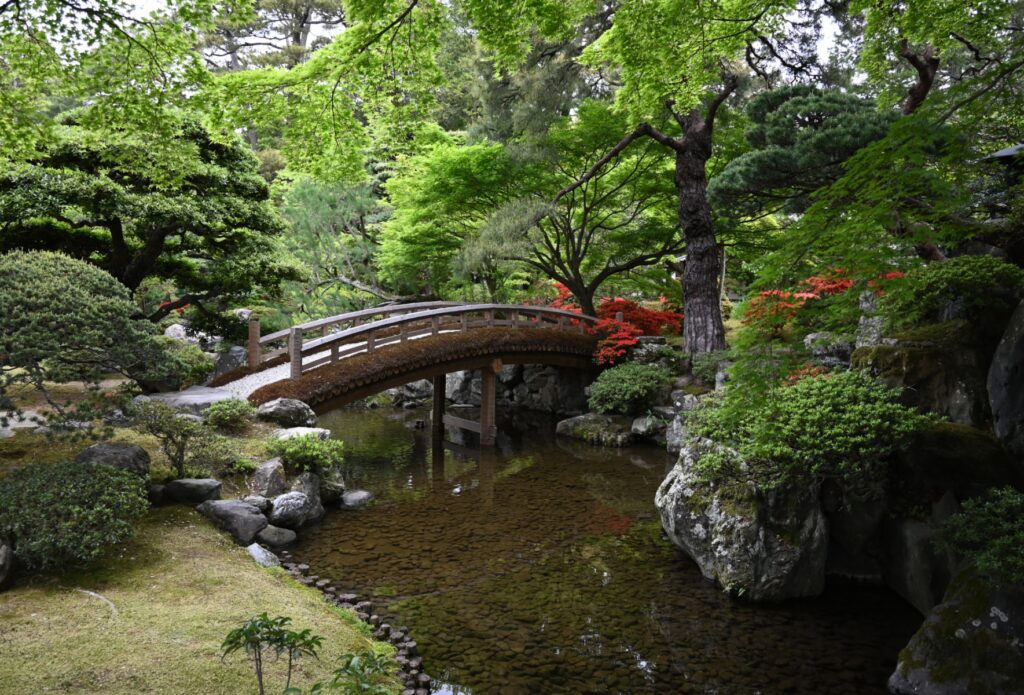
Day 11: Rainy day. The schedule is therefore less busy. We’ve booked tickets for the Samurai and Ninja Museum at lunchtime. We decide to walk to the museum and stop by the Koshoji and Higashi Hongan temples along the way.
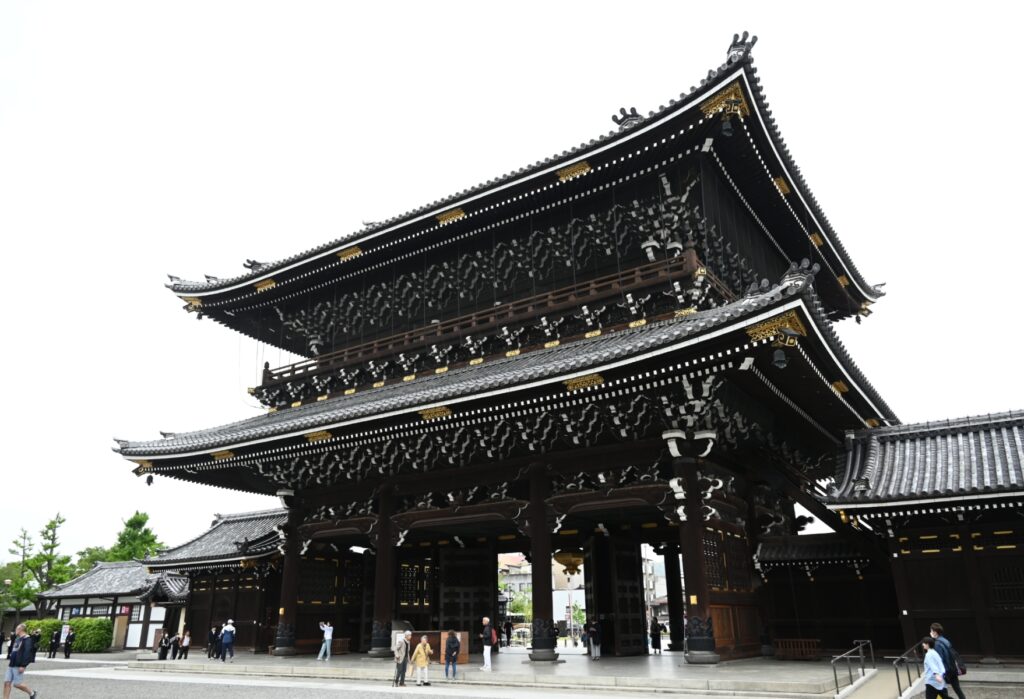


The Samurai and Ninja Museum is not actually a museum. It’s more of an immersive experience with some explanations mainly about the samurai. The visit is guided, lasts 30 minutes, and provides some insights into the samurai. Several explanatory panels are also available for additional information. Unfortunately, the brisk pace of the tour makes reading them challenging. Genuine and well-preserved weapons and armor of samurai displayed along the route are a real highlight.



During the second part of the tour, we were offered the opportunity to throw shurikens (the stars thrown by ninjas to create distraction). It’s fun and not as easy as it looks to hit the target!



The last part of the experience is a photo session in samurai costumes. There’s no time constraint imposed. It’s fun, but samurai helmets are really heavy!


The pouring rain keeps us indoors for the afternoon, wandering through shotengai, pedestrian-covered shopping streets. We also make a mandatory stop at the Nintendo Store Kyoto.

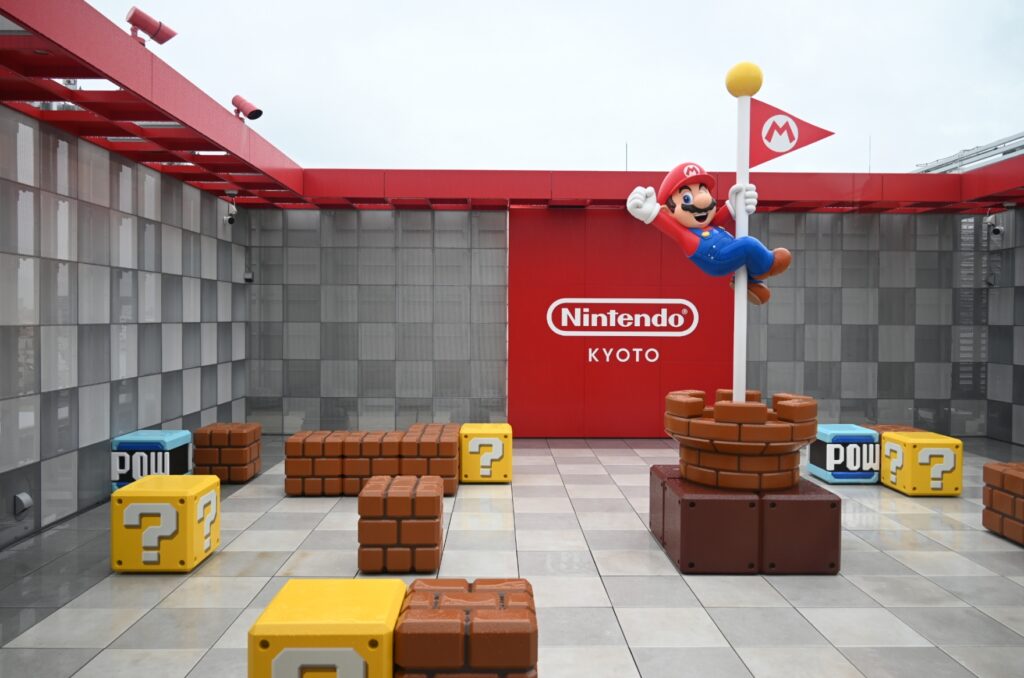
Day 12: We take the train to Nara. As soon as we exit the station, we are greeted by the numerous deer (considered sacred) roaming freely all over the city. We quickly pass by the Kofuku-ji Temple, located just a stone’s throw from the station. The temple doesn’t seem particularly remarkable, so we decide not to pay to enter. Photos from the outside will suffice.


We then walk, still surrounded by deer, through Nara Park to the Todai-ji Temple. It’s the largest wooden structure in the world. The main hall houses a huge seated bronze Buddha, standing 14 meters tall. The visit is quite enjoyable.





We continue our stroll through the park to the Tamukeyama Hachimangu Shrine. It’s a small shrine. When we visited, it was crowded with schoolchildren feeding the deer and bowing to them. Legend has it that if a human bows to a deer, the deer will bow back. Well, in reality, the humans bow indeed, and the deer contort themselves to grab the food offered to them. The scene remains quite amusing, nonetheless.
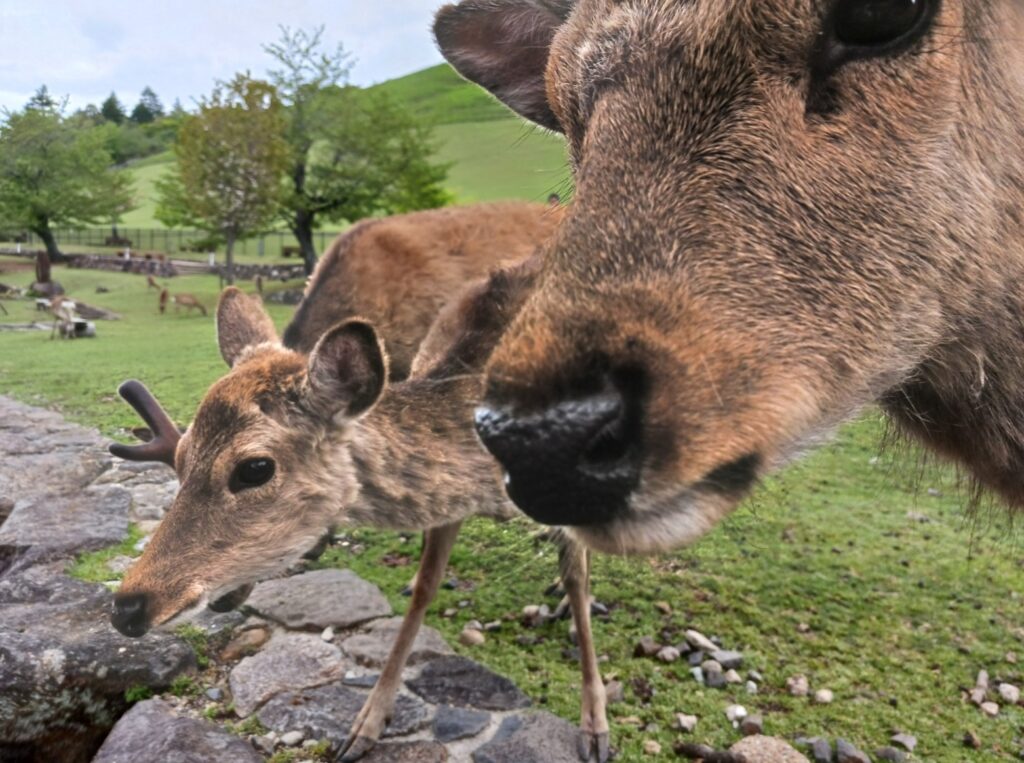

We finally arrive at the Kasuga-taisha Temple. This temple is undoubtedly one of the most beautiful we have seen since arriving in Japan. In addition to the thousands of stone lanterns leading up to its gate, the temple is perched high in the greenery of the park. Several statues are covered in moss. The atmosphere has something of a mystical feel with the huge trees and their exposed roots.




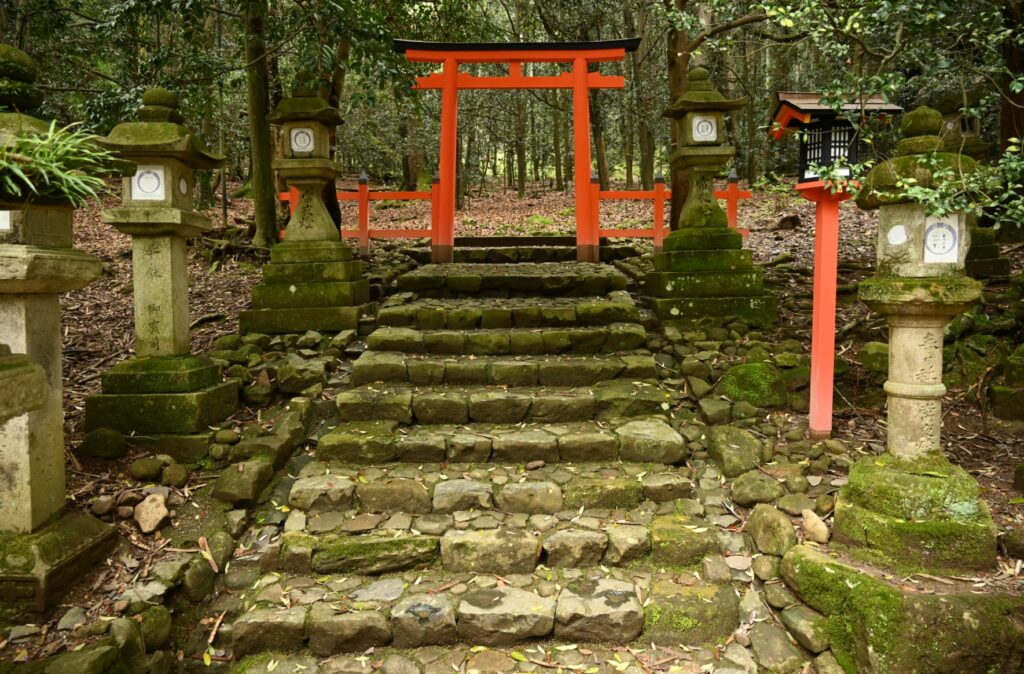
Since the day is not yet well advanced, we decide to make a detour to Inari before returning to Kyoto. We want to visit the Fushimi Inari Shrine, known for its numerous torii gates, vermilion and black gates marking the entrance to religious sites. There are nearly 10,000 gates that trace a path up to the top of Mount Inari. Inari is primarily the name of the rice goddess, important in Shintoism. This goddess has fox messengers, and it is possible to admire numerous statues of foxes all over the site.



The entrance of the site is overflowing with tourists (and groups in particular) despite the fact that the afternoon is already well advanced. It’s even difficult to circulate because people block the passage in order to be alone under the torii to take beautiful Instagram photos. However, by following the trail that climbs towards the summit, the number of tourists diminishes. The walk is thus more enjoyable. We also have the chance to take some lovely photos ourselves.




Day 13: We are returning to Gion with the hope of encountering a geisha there.




The grey weather seems to have scared away the tourists, who are much fewer in number than during our first visit. Unfortunately, no geisha is to be seen. Therefore, we had to improvise…

To finish our stay in Kyoto in style, we head to the headquarters of… Nintendo! After raiding two stores and diving into a life-sized video game at Universal Studios, it’s now time to see for ourselves where it all happens. In itself, it’s not exciting. It’s a huge grey building without a trace of color or characters, where it’s obviously impossible to enter. However, for François, who grew up with Nintendo, seeing this building standing before him is a dream come true. He’s clearly thrilled to be there.


Day 14: We take the train to Tokyo in the morning. Some are more crowded than others. We have lunch directly at Tokyo Station, after having browsed through the manga and figurine shops located underground. François will have the opportunity to visit his fifth Pokémon Center in Japan and his first Kirby Café (where the pastries are outrageously priced).





The heavy rain will keep us at our hotel for the rest of the day.
In the middle of the evening, our hotel literally starts to sway. An earthquake with a magnitude of 5 occurred about a hundred kilometers from Tokyo. In the capital, the perceived magnitude is 2. Not used to seismic activity, we got quite a scare.
Day 15: The sun has returned to Tokyo. We’re taking advantage of the good weather to plan a stroll through the streets of the capital. First, we’ll take the subway to the Tokyo Skytree. It’s a broadcasting tower standing at 634 meters tall, which entered the Guinness World Records in 2011 as the tallest non-inhabited tower in the world.

A shopping center is located at its base, and François takes the opportunity to visit his sixth Pokémon Center.


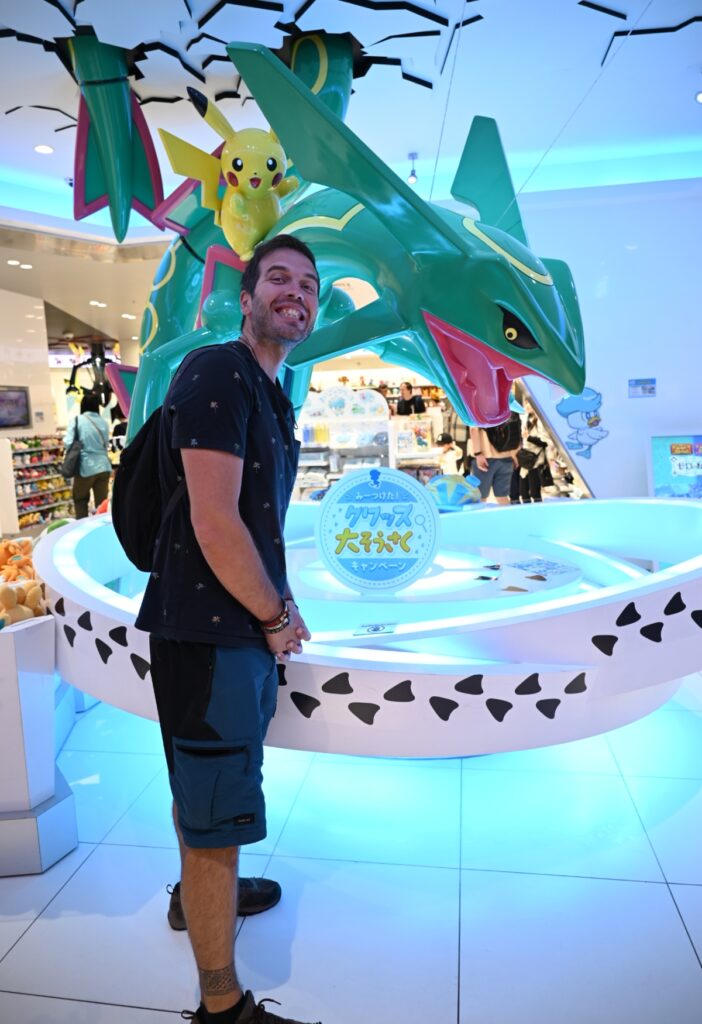
Then we walk to Nakamise Street in the Asakusa district, passing through the southern part of Sumida Park (under construction).


Asakusa, known for its shopping street, is packed with tourists. We struggle to make progress. It’s even worse at the Sensoji Chingodo Temple. Overrun by tourists, the temple has lost all its spiritual charm and tranquility. We only stay there for a few minutes before continuing our walk towards Kappabashi Street.


In this street, there are shops that supply restaurants with utensils, kitchen accessories, and plastic food models. Despite that, tourists can still find chopsticks, kitchen towels, and utensils for cheap prices.



The stroll continues towards Ameyoko Street, another shopping street, and Ueno Park.


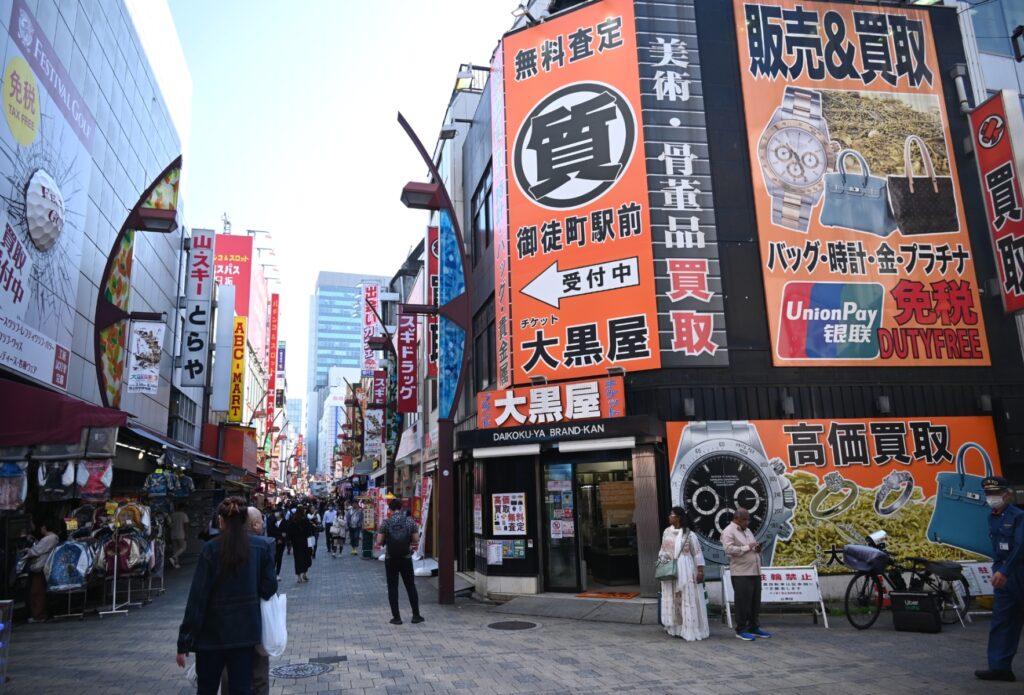



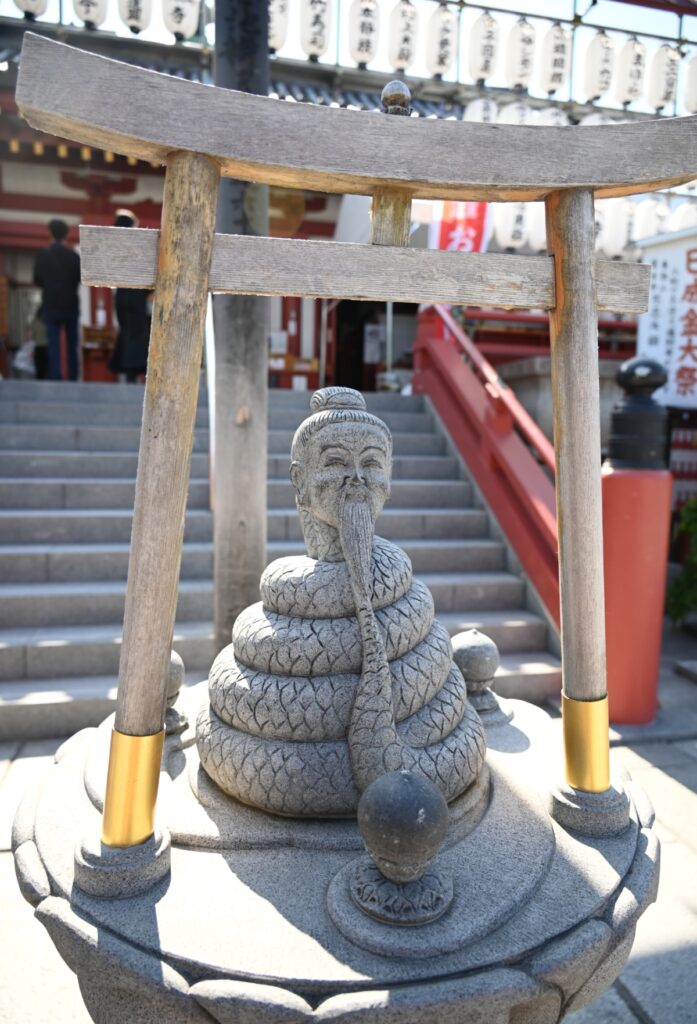
Then we take the subway to the Bunkyo Civic Centre. The building itself isn’t particularly interesting. However, there’s a free observatory on the 25th floor. From there, you can have an almost 360-degree view of the city. It’s even possible to catch a glimpse of the top of Mount Fuji on a clear day.

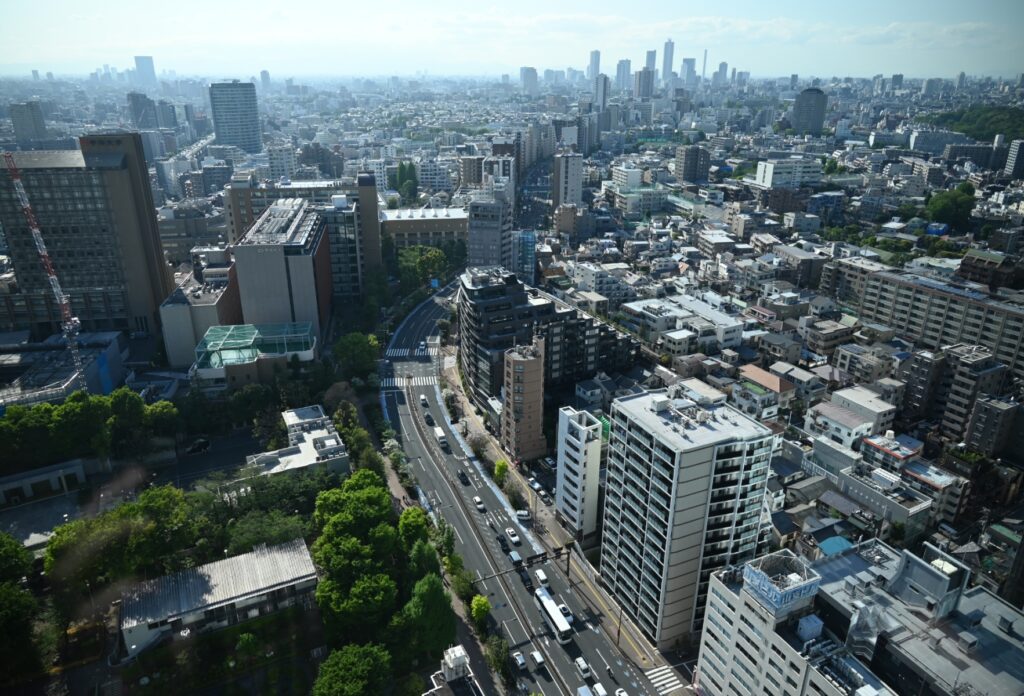

We end the day in the Akihabara district. This area is known for its electronics shops. Video games, especially retro gaming, and manga are also becoming increasingly popular there.



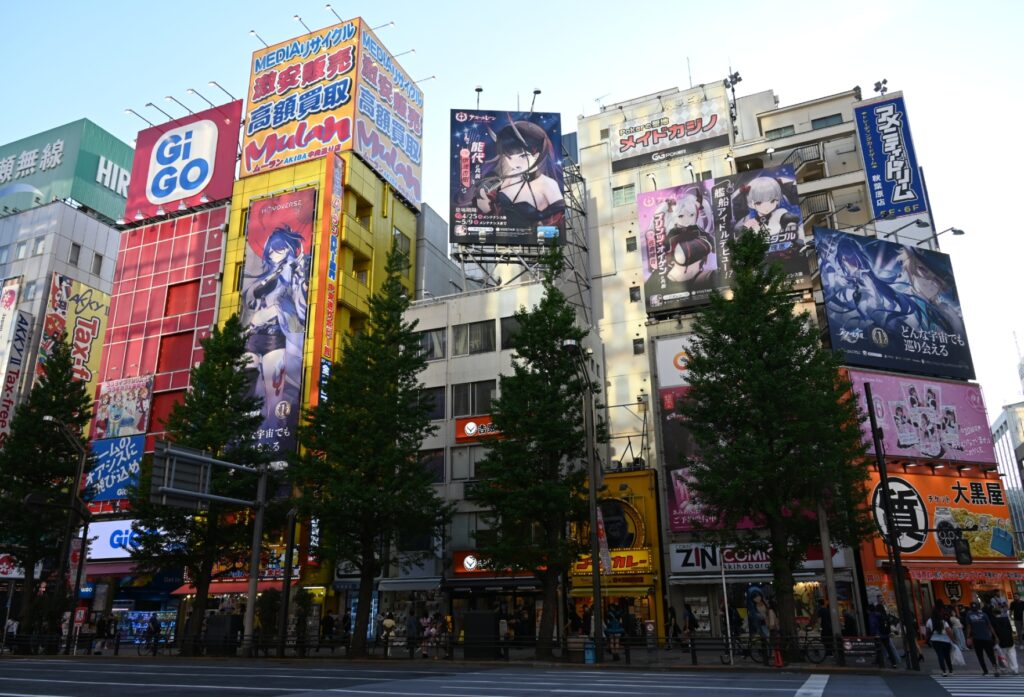
Day 16: We head towards Nihombashi, where a seventh Pokémon Center is located. François is still as thrilled as ever.
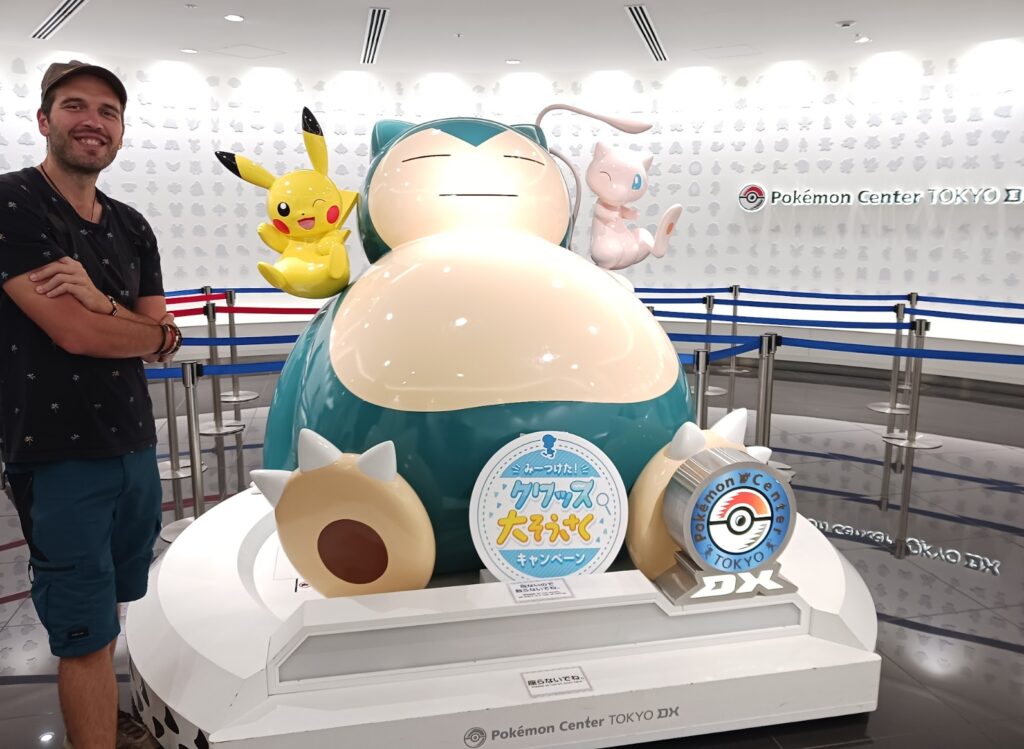

Then we walk towards the shopping district of Ginza. With its grand avenue lined with tall buildings and luxury boutiques, Ginza has a little touch of Fifth Avenue (minus Central Park at the end).


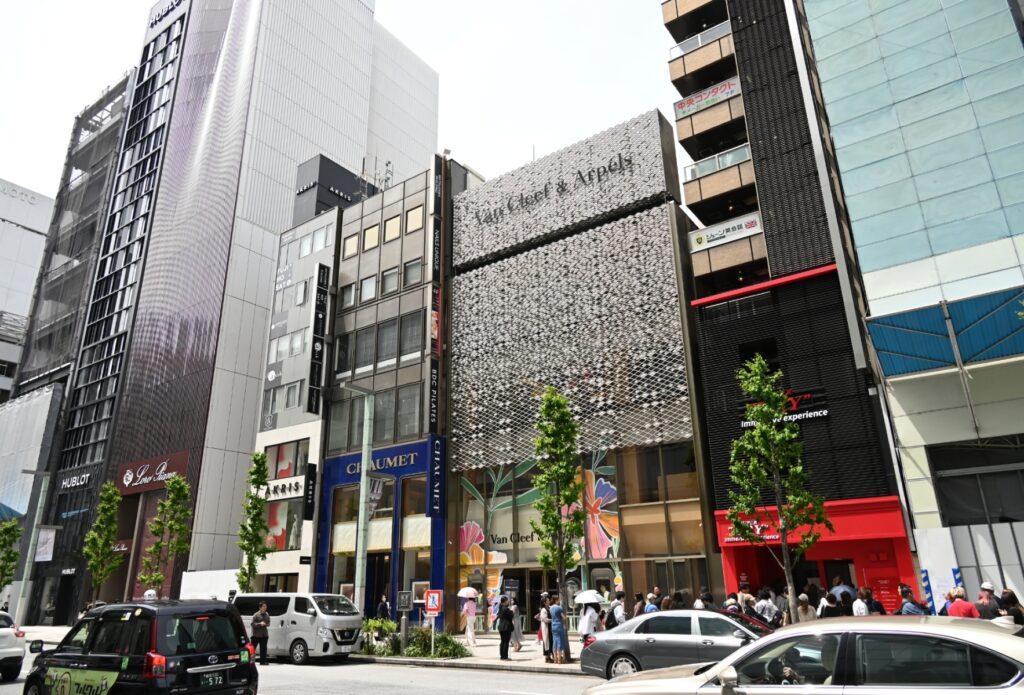
Then we take the subway to Shibuya, a district known for fashion, culture, and entertainment. The area is also famous for its bustling intersection surrounded by illuminated billboards, where it’s possible to cross in all directions. 2.4 million people cross this intersection every day, which amounts to 2500 people at each green light!

We stroll through the streets of the neighborhood and try out a sushi restaurant where the dishes are served to us on conveyor belts. While the experience is playful, unfortunately, the sushi itself is not good.




Then we head (with François leading the way) to do some shopping at the Nintendo Store Tokyo and the adjacent Pokémon Center (the eighth one, in case you lost count).




We also pass by the Disney Store, which is quite original with its twisted castle facade. Rest assured: no purchases were made there.
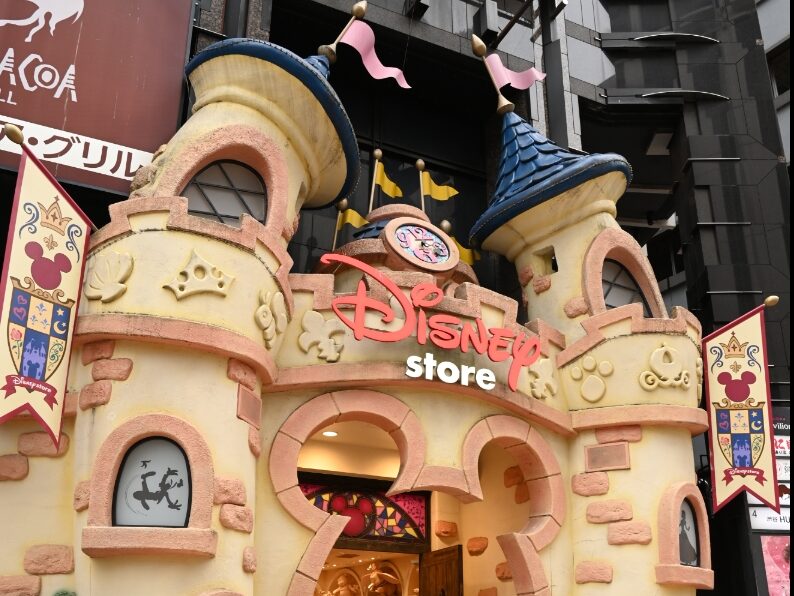
Day 17: We leave early to attend a sumo wrestler training session. The stable (their training place) is tiny. It’s impossible for a tourist to enter. However, we can watch the training directly from the street and through the glass facade. The training lasts for two hours. We arrive just under an hour before the end, and about thirty people are already crowded in front of the window. We manage to squeeze in to see something and take some photos, albeit with difficulty.


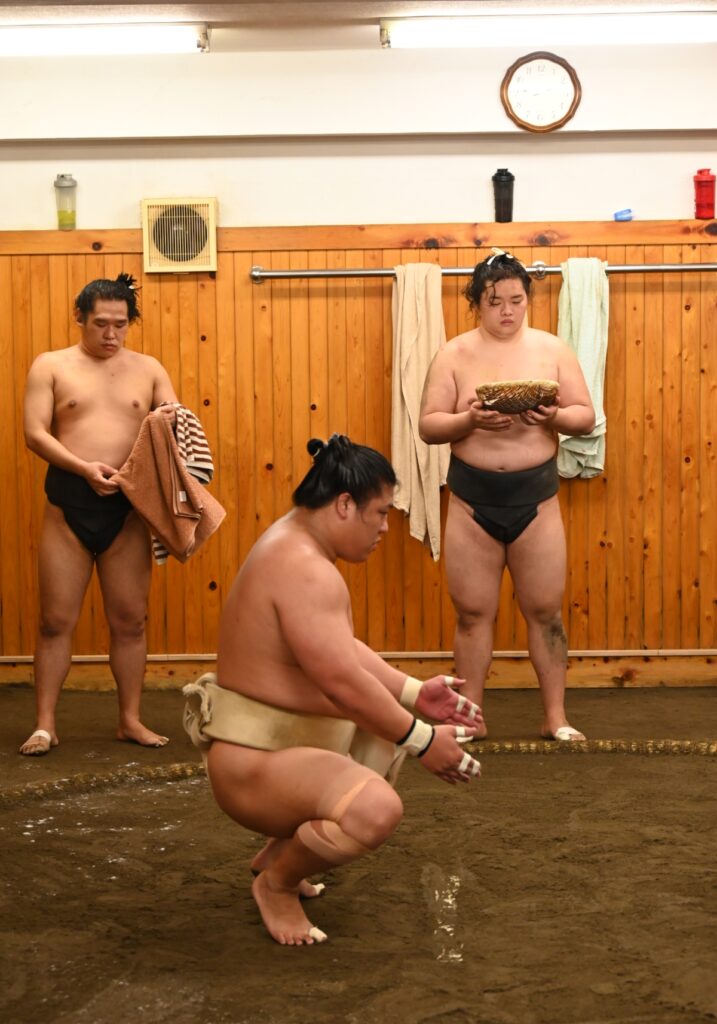
The spectacle is very impressive. Eight sumo wrestlers are present, including a champion who recently won a major tournament. While some push each other around and get pushed out of the ring, others do stretching exercises. At the end of the session, we’re treated to some “real” matches. We see the wrestlers charge and violently collide with each other. The sound of impact is powerful. The champion manages to defeat all his colleagues in succession without flinching.
At the end of the session, two wrestlers go out into the street to take photos with the present visitors. We also proudly pose next to them. Benjamin still has some work to do before making weight.

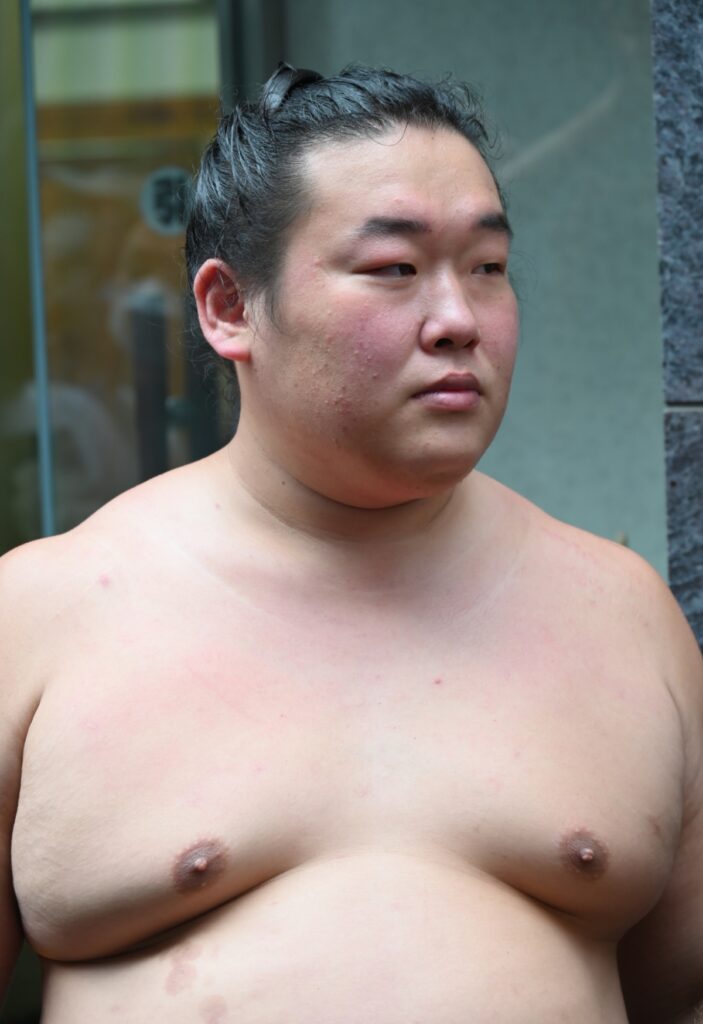

After that, we take the metro to Zozo-ji Temple, located at the foot of the Tokyo Tower. The tower actually ruins the landscape. It’s impossible to capture the main hall of the temple without having this huge tower right behind it. Moreover, the massive side of the tower overwhelms the temple, which seems quite small next to it. A lovely little path running alongside the temple is filled with statues of protective deities of children.

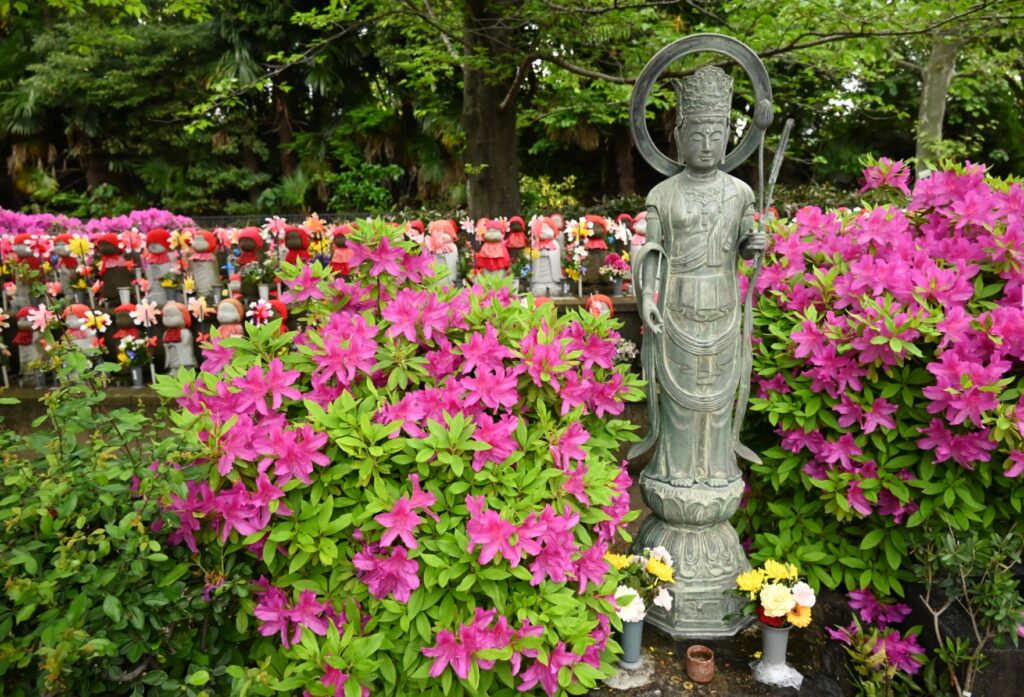
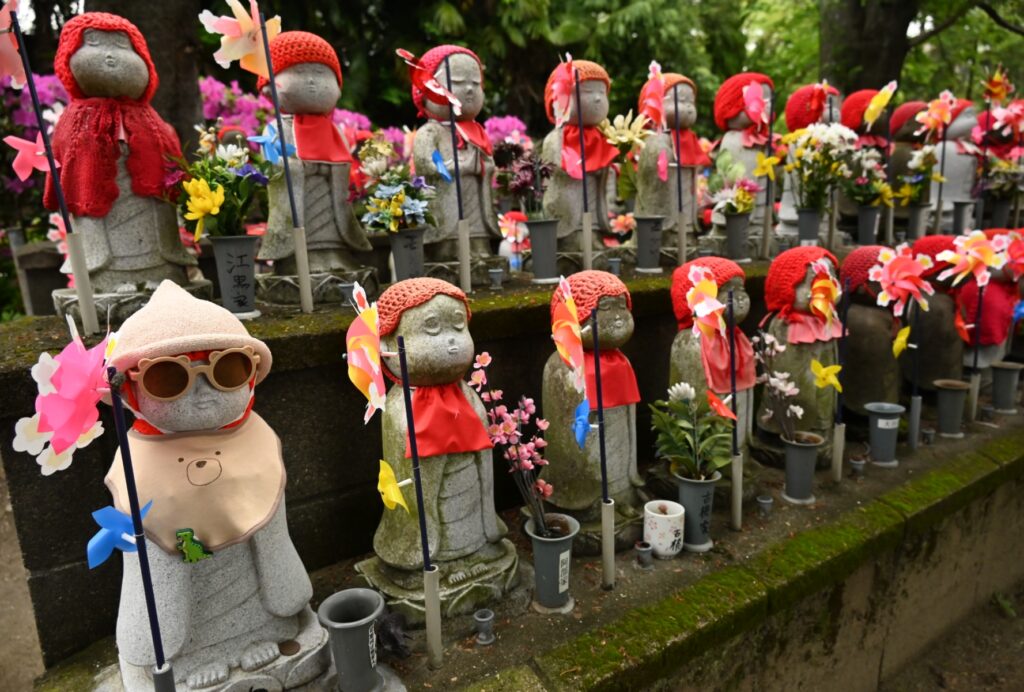
We walk towards the Roppongi district. It seems that the area is famous for its nightlife (which we obviously missed). It’s also known to be a trendy, hip, and luxurious neighborhood. Several Michelin-starred restaurants can be found there. Since the neighborhood clearly doesn’t align with our world tour budget, we find a cheap curry chain for lunch and quickly head back to the metro.


We head to the eastern gardens of the Imperial Palace. Access is free and the internet reviews are glowing. In reality, it’s more of a green park surrounded by buildings. During this season, there were few flowers. We lounge on the grass before returning to the hotel.



Day 18: We take the train to Kamakura early in the morning. We want to see two sites there that have left good memories in Benjamin’s mind.
The first, Kotoku-in Temple, is mainly known for its enormous statue of a seated Buddha. This bronze statue was built in 1252. It weighs around 12 tons and measures a little over 13 meters. Even though the temple itself isn’t particularly interesting, the Buddha alone is worth the visit.
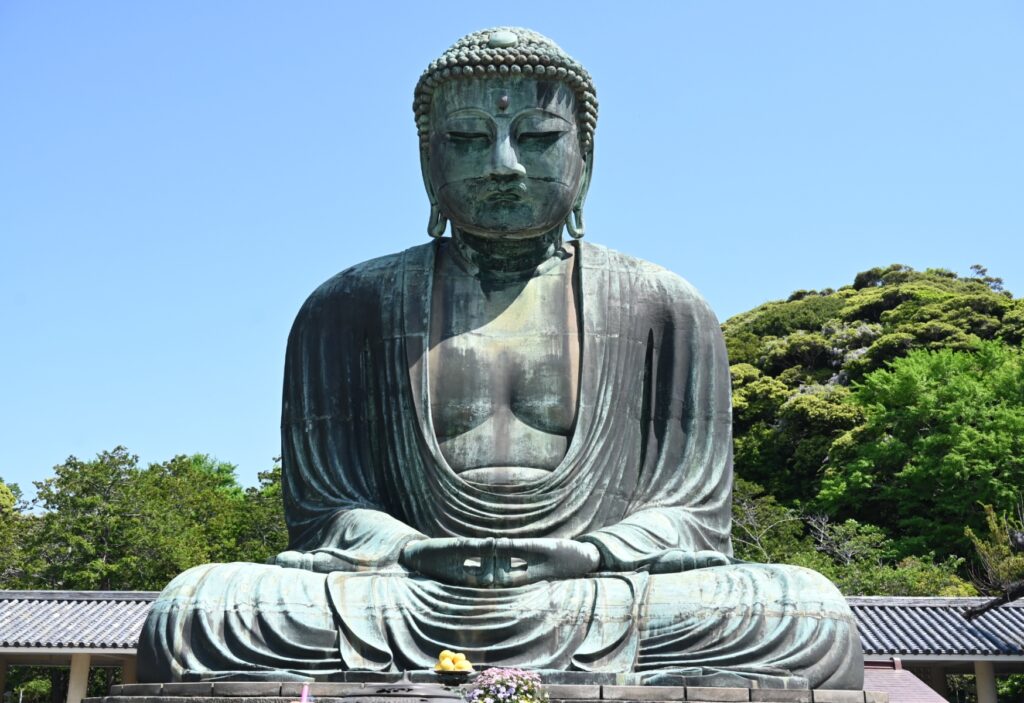



The second is the Hasedera Buddhist Temple. Built on several levels, it features multiple halls for contemplation, a cave, and a path that offers a lovely view of the sea. It is also known for its small Jizo Buddhas with a very kawaii look.




We then have lunch at a restaurant near the temple. We sit on the floor, on cushions, and eat okonomiyaki (a Japanese omelet) and teppanyaki (a mix of meat and vegetables) that Benjamin cooks for us right at the table. Excellent! And the first “home-cooked” meal we’ve had in several months.


We return to Tokyo where we spend about two hours at the hotel before going back out to enjoy the nighttime atmosphere of the Shinjuku district.

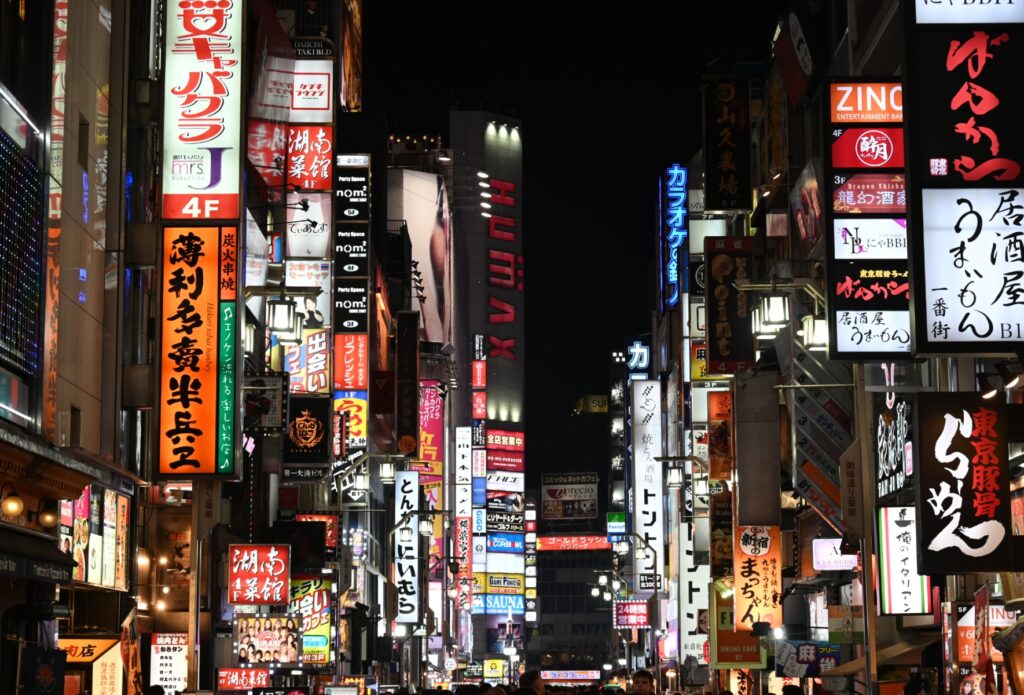


Day 19: We sleep in and leave late in the morning to see the Godzilla statue at Hibiya Square. The statue is 3 meters tall and, a fun fact for fans and enthusiasts, is located near the old Nihon Theater (demolished by the monster in the first film).

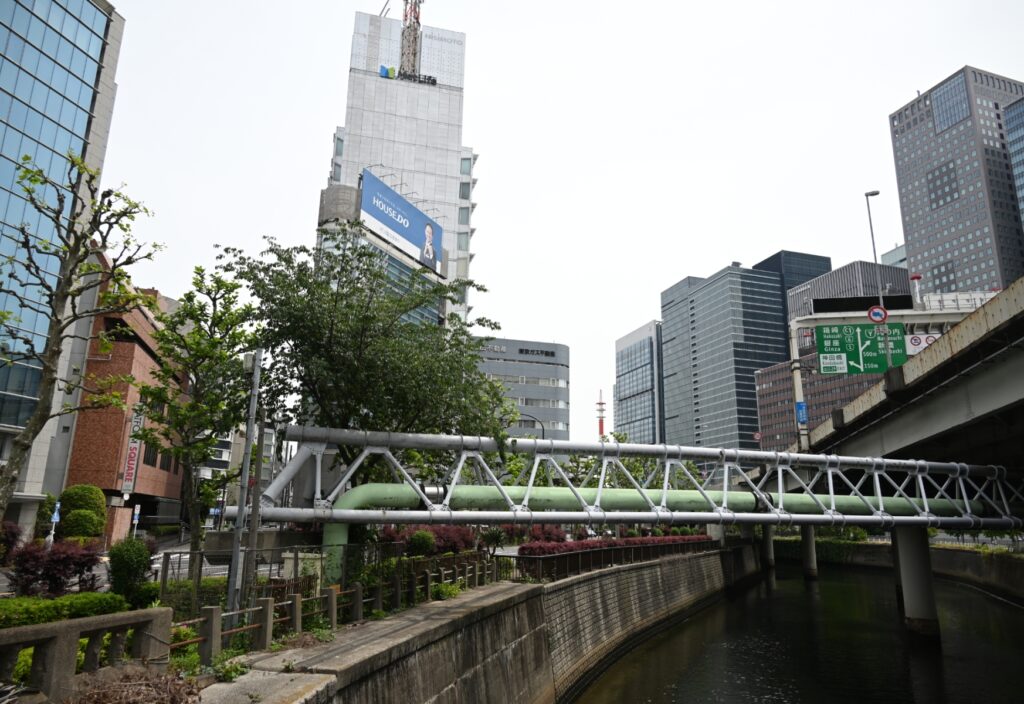





We then return to Shinjuku to see the district by day… and Godzilla, who seems to want to demolish a cinema. Shinjuku remains quite crowded, but the scantily clad young girls or those dressed as cats or bunnies we saw the night before are absent.
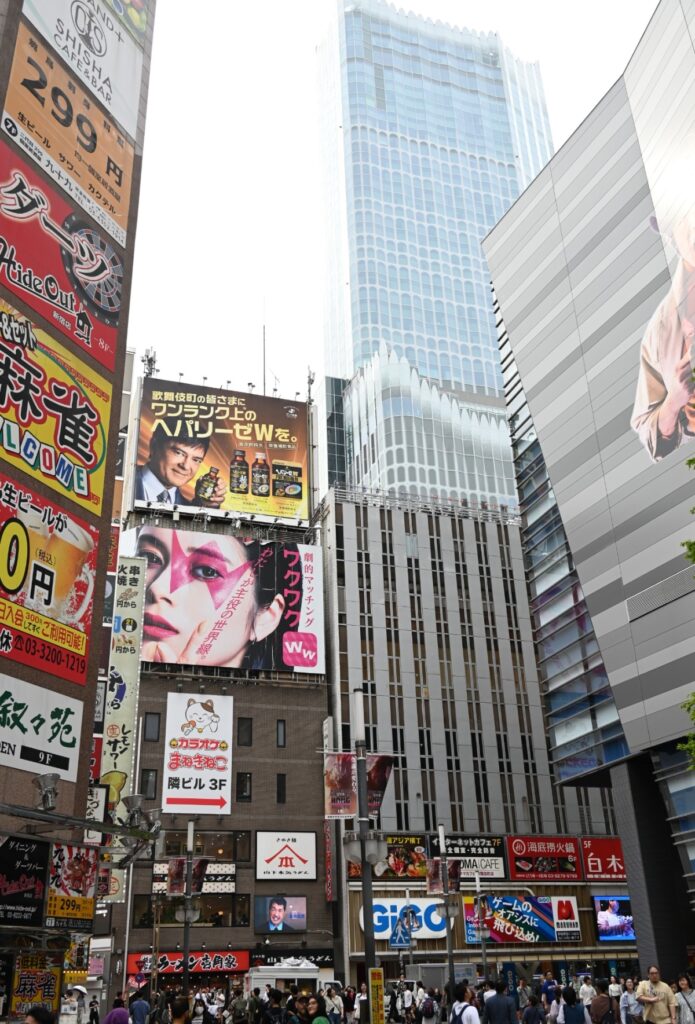


We pass by the Hanazono Shrine before going to eat at a nearby restaurant.





We finally return to Shibuya. François still has a few purchases to make there… We take the opportunity to snap a few photos of the famous intersection.




Day 20: The morning is reserved for sending packages to France. We have accumulated various souvenirs since the beginning of the trip, some of which have been with us since Dubai. François has also maxed out the credit card at every Nintendo Store and Pokémon Center encountered along the way. It’s impossible to keep all of this with us. So, nearly 10 kilos of items must be sent off; otherwise, the upcoming flights will be problematic.



We thought sending a package from Japan would be simple. Big mistake! That was without counting on the psychological rigidity and bureaucracy of Japan. In total, we spent 3 hours at the post office. We had to redo the forms twice because they were not acceptable. There was always a space poorly filled in here or there.
At times, we felt a bit like we were in the madhouse of The Twelve Tasks of Asterix.
We have lunch nearby before heading to Kappabashi Street. We visited it earlier in the week, but when we passed by, the shops selling fake food were closed. It would be a shame to leave Japan without a plastic skewer or tempura shrimp (no comments on the fact that we just sent everything to France…).

We walk to the Tokyo Skytree from where we take the metro back to our hotel.




Day 21: Last day in Japan and it’s pouring rain in Tokyo. We spend the morning booking flights and hotels for the rest of the trip and making progress on the blog. We have lunch at a sushi restaurant where we eat the best sushi of our lives. The fish is incredibly fresh, tender, and flavorful. A real delight!



We then go to digest all of that in an onsen. These are non-mixed public baths with many hot pools, saunas, steam rooms, etc. Since everyone is naked, photos are obviously prohibited. The experience isn’t unpleasant. We only regret that all the pools are at least 40 degrees Celsius, so it quickly gets hot. Besides going outside in the rain, there are limited ways to cool down. We would have also liked to have a user manual for the onsen, a code of conduct. In a country as protocol-driven and rigid as Japan, it’s easy to make a faux pas, especially for such a traditional activity as an onsen. What are the things you can’t do? What is the ritual upon arrival? Upon departure? In short, a bit more information to avoid shocking.

Day 22: It’s already the end of our adventure in Japan. We leave Tokyo in the morning for a seven-hour flight that takes us to Singapore, the next stop on our long journey.
Find all our other articles on Japan:




